Blog
December 23rd, 2011
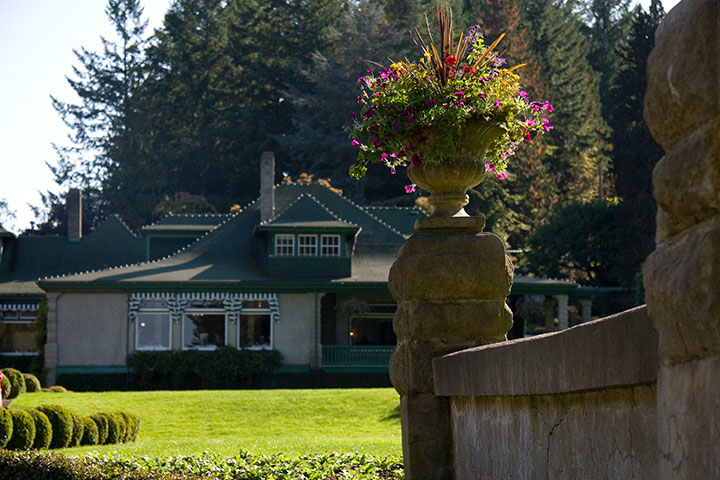
The three days Nicole and I spent in Victoria were star-studded with beauty and color, but nothing was quite so breathtaking as the Butchart Gardens, just a few minutes north of the city.
Now a Canadian National Historic Site, the Gardens were the private grounds surrounding the home of Robert and Jennie Butchart. So the place didn’t feel like your average botanical garden or arboretum. There were no exhibit signs, no identifying plaques next to the different flower types, nothing that created the feel of a museum—instead there was the perfect illusion of taking a stroll around the grounds of a palace, or traveling back in time to the days of manor houses and perfectly-maintained estates. Yet this was no exclusive world; the estate is named “Benvenuto” (Italian for “welcome”). The Butcharts welcomed to their home any visitor who wanted to see it, and they were famous for their hospitality. Jennie had reportedly served 18,000 cups of tea to friendly strangers before her family convinced her to charge a nominal admission fee.
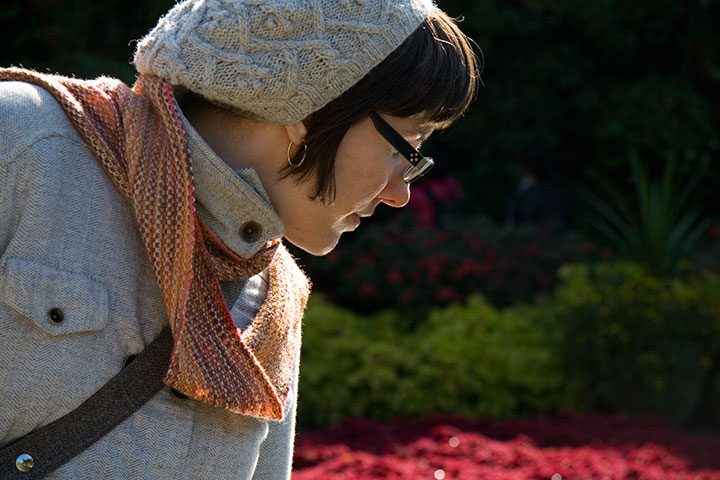
It wasn’t hard to see why the visitors came in droves. Nicole wandered off to admire the variety of blooms, but I stood mesmerized by the light.
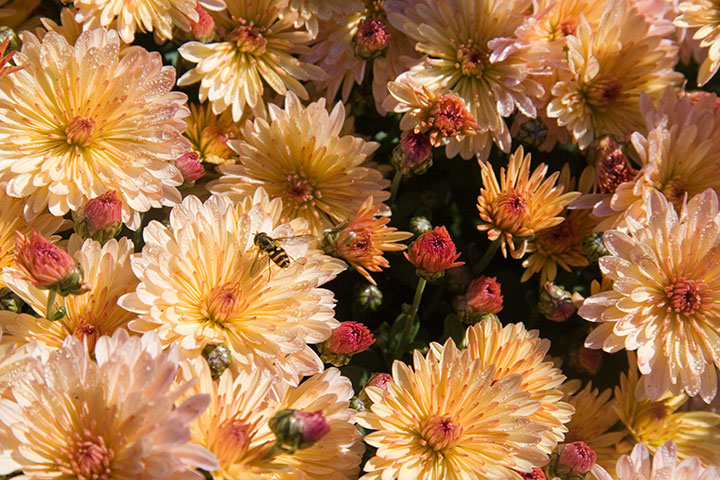
Usually gardens in the Northwest have a somewhat otherworldly glow, what with our silver skies and rainy mists. But in full sunshine, the place was an absolute riot of color.
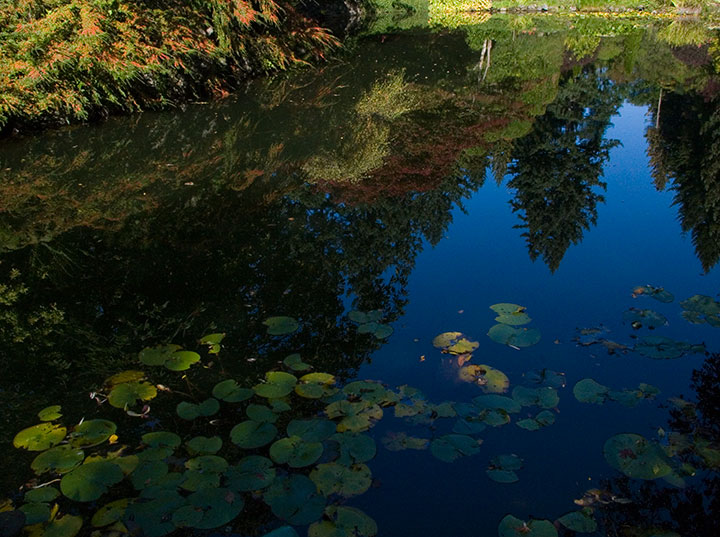
I could have spent the whole day just losing myself in the jewel tones all around me.

But Jennie Butchart’s garden is so much more than a flashy display of color: it’s also a staggering feat of environmental design and land reclamation. Jennie was way ahead of her time.
You see, the Butcharts’ land began as a turn-of-the-century limestone quarry, which supplied Robert’s cement company with raw material. When the quarry was exhausted, all that was left was a barren pit. It was Jennie who had the idea to transform an industrial wasteland into a thing of beauty. She had many tons of topsoil brought in by horse and cart, and over the course of several years, she gradually, patiently reclaimed the land and shaped it into a thriving garden.
The result is the stunning Sunken Garden, a masterpiece of earthworks and living sculpture. I was expecting the Queen of Hearts to appear around a bend in the path, a flamingo tucked under each arm. The perfect English garden.
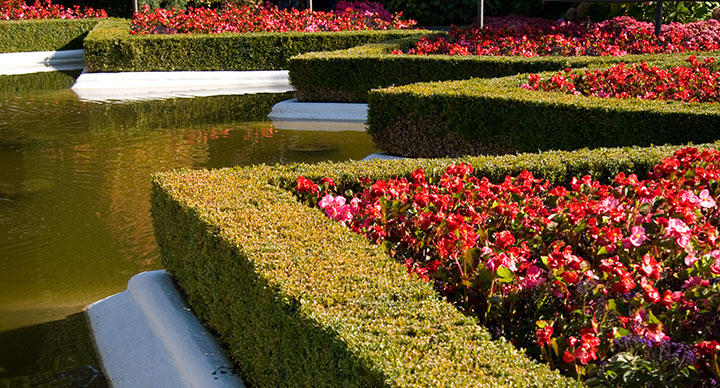
As I continued along the path, suddenly I found myself transported to Versailles—

—and then to Japan.

Lest I lose my bearings, though, reminders that this is the Northwest were ever-present.
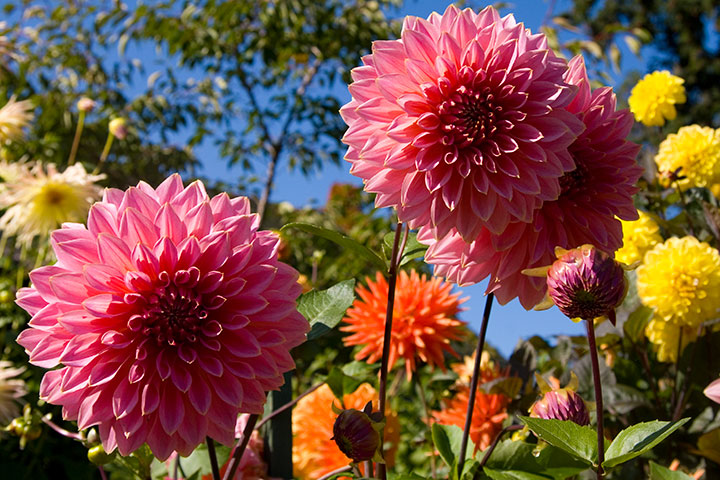
Jennie’s garden has evolved far beyond a labor of love. It’s truly a national treasure, and an international curiosity—we heard well over a dozen different languages spoken that day, and struck up conversations with people from five different continents.
Yet despite the flocks of travelers, it was never difficult to find a moment of peaceful, contemplative solitude. I can’t wait to return, and eventually visit Jennie’s garden in every season of the year.
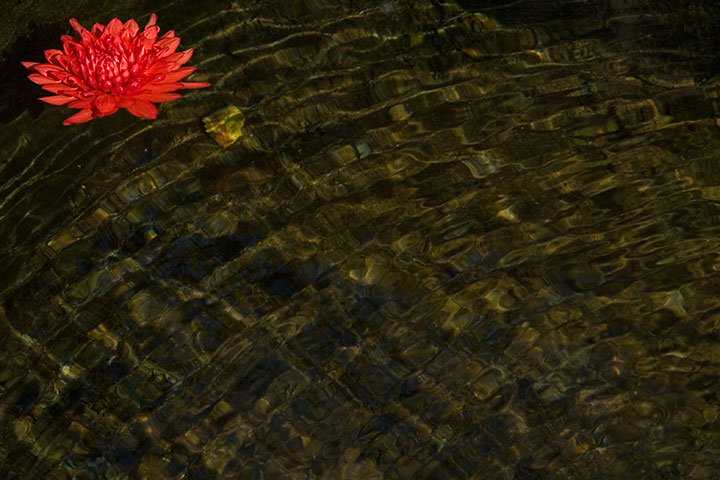
December 20th, 2011
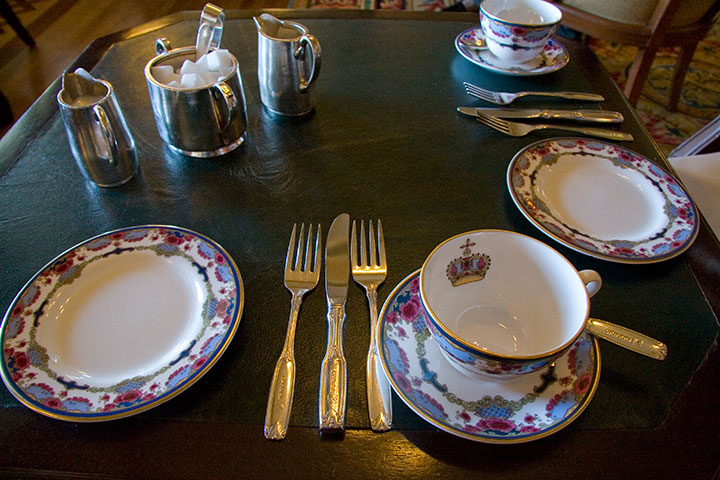
No stay at the Empress is complete without sitting down to Afternoon Tea.

Now, I love a good cuppa no matter where I am, but leaning back in a squashy chair and gazing upward at something like this makes every sip a little more special.
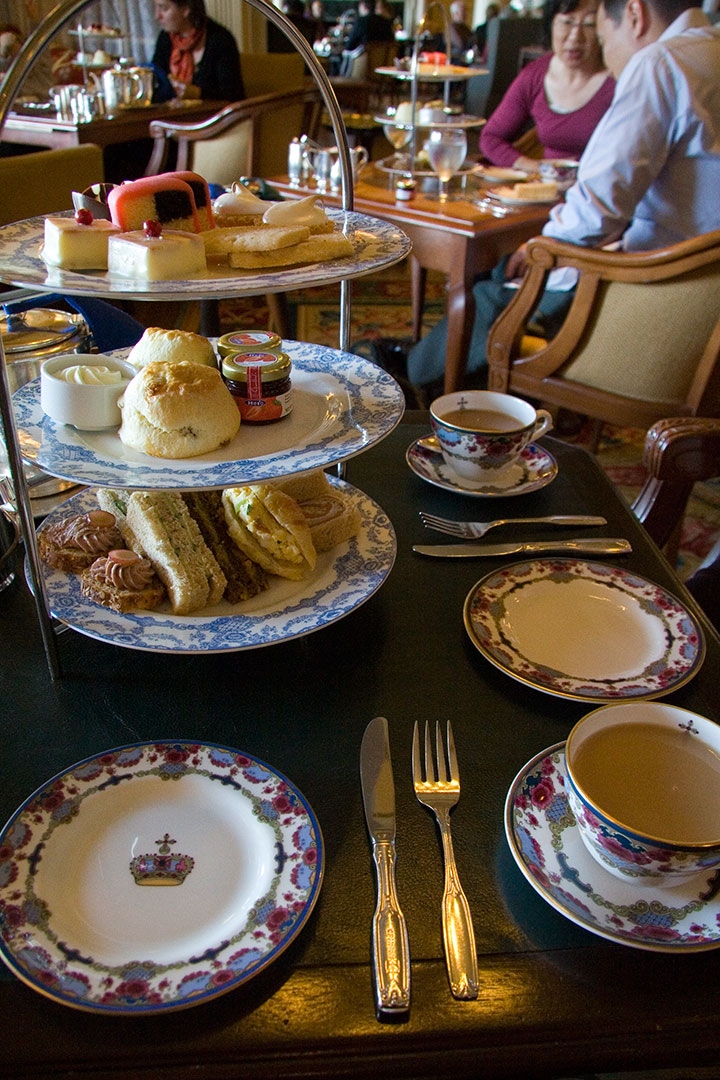
The Empress has been pouring tea every afternoon since it opened in 1908—it was the first venue in Victoria to offer it to the public.
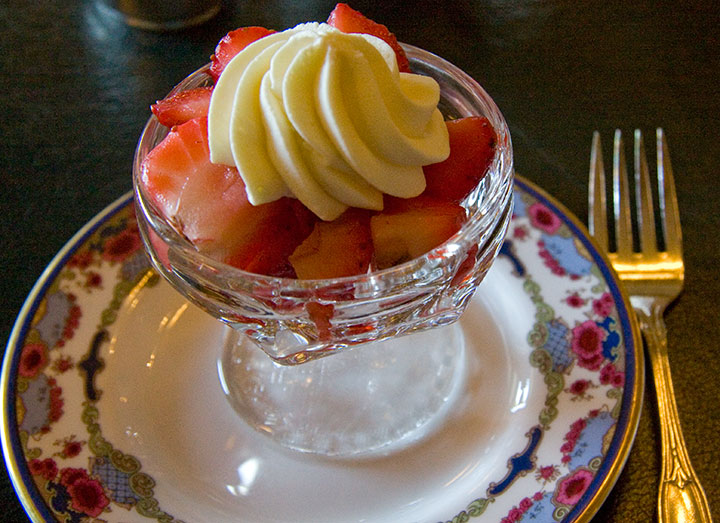
For over a century it’s been one of the city’s biggest tourist draws, but it was easy to forget all about the crowds. Somehow it felt like a quiet, private meal at the home of a dowager aunt. Not normally my, uh, cup of tea, but I loved how unexpectedly cozy it was.
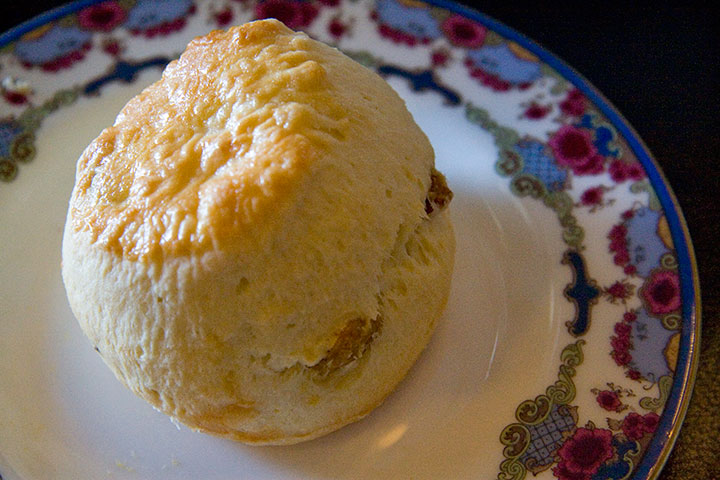
The scones made me miss the Tailor. He would have loved them—and then tried to figure out the recipe.

The savory course was to die for. It was a curious, perfect mix of England (curried chicken, cucumber finger sandwiches) and the Pacific Northwest (best smoked salmon ever). Two months later, I can’t even look at this photo without the memories flooding my taste buds and making me salivate.
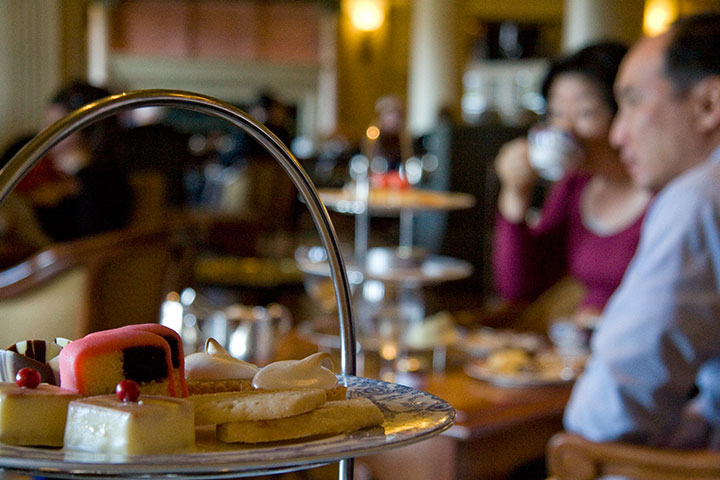
The Inner Harbour just outside the window, a good friend across the table, and a seemingly endless array of flavors to hand: the perfect recipe for a relaxing Sunday afternoon.
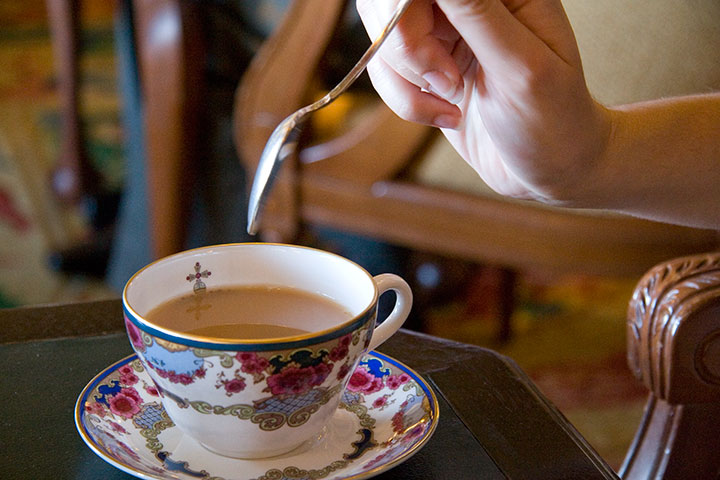
December 18th, 2011
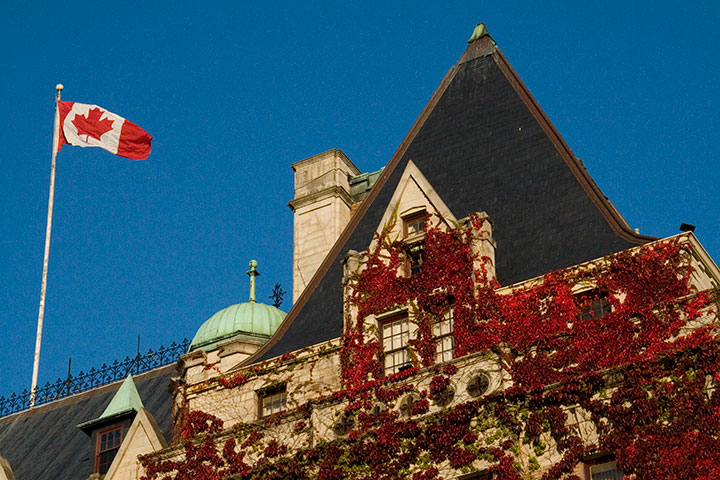
Yeah, I know. It’s a week before Christmas, and Hanukkah starts tomorrow. Our tree is up, and we even had our mega-huge holiday party last night (62 people—a new record!). But somehow, my mind is occupied with red-gold maples, not flocked evergreens. Maybe it’s the fact that everyone’s lawns are at their greenest at this time of year. Or maybe it’s the knowledge that once these Festivals of Light are over, there’s still a whole lot of actual winter darkness and that Northwestern silver-grey pall to overcome before the sun returns. Whatever it is, I’m not quite ready to let go of autumn yet. So in between the holiday records and the hall-decking, I find myself poring over my fall photos.
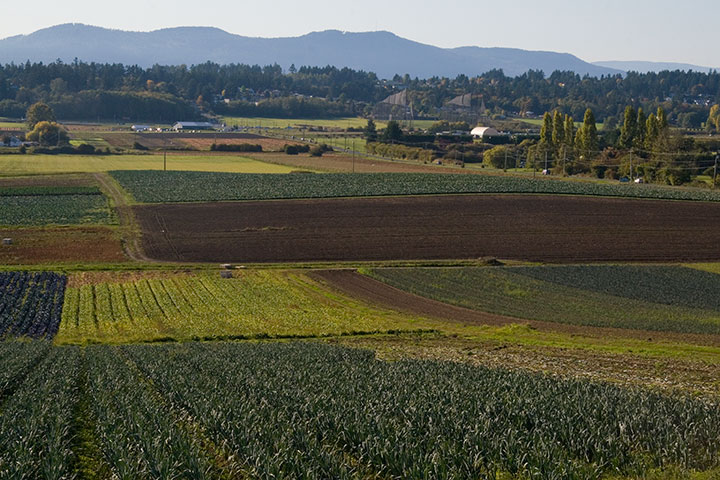
Autumn is always my favorite time of year, and this was a particularly good one. We had more sunny days than we have any right to expect in the Northwest, but that’s not the half of it. This was my thirtieth fall, so for me, there just seemed to be a hint of celebration in the air.
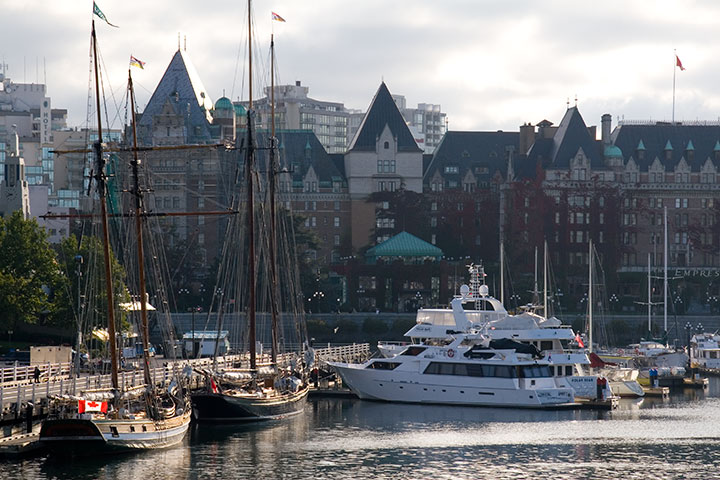
And so to start our next decade off with a bang, my friend Nicole (who also turned thirty this fall) and I spent three glorious days in Victoria, British Columbia.
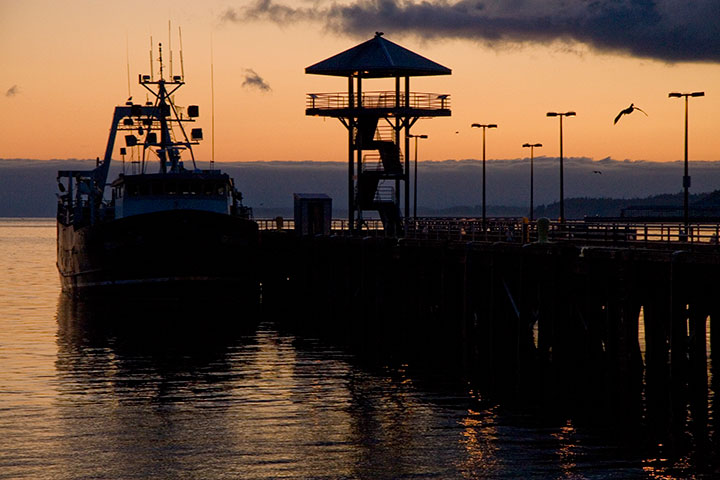
In order to catch the morning ferry to Vancouver Island, we had to leave T-Town at oh-dark-thirty to reach Port Angeles at sunrise.
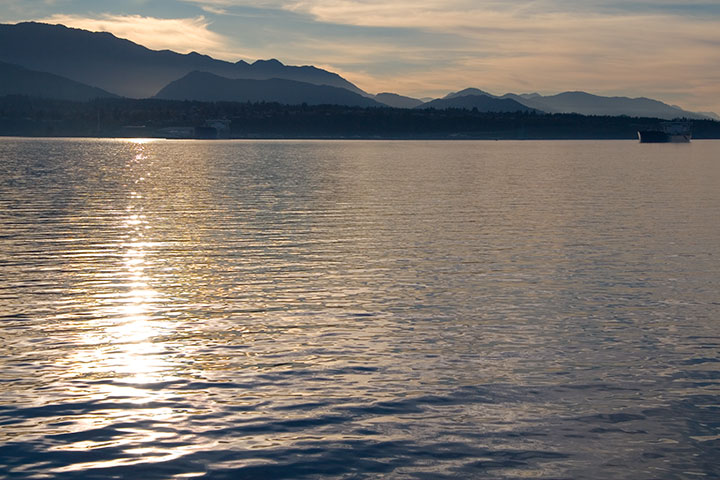
With view like this as a reward, though, it was hard to complain about the pre-dawn slog.
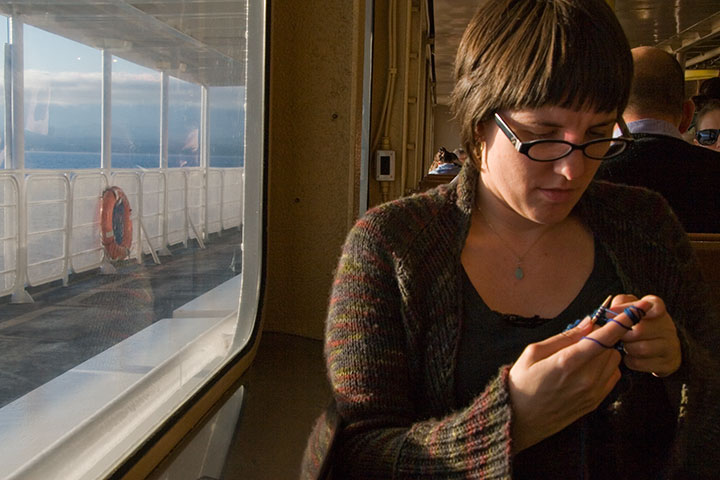
The tall cups of hot, strong coffee—and knitting!—keeping our hands warm didn’t hurt, either. After a ninety-minute crossing over the Strait—
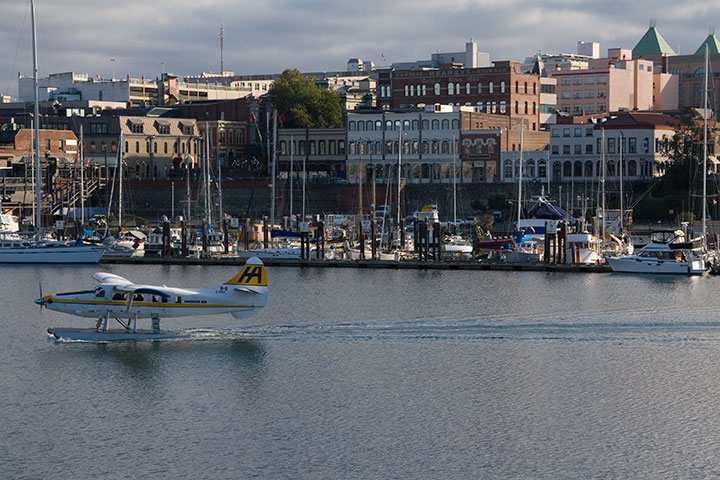
—and a tight squeeze through the snug Inner Harbour—there we were.
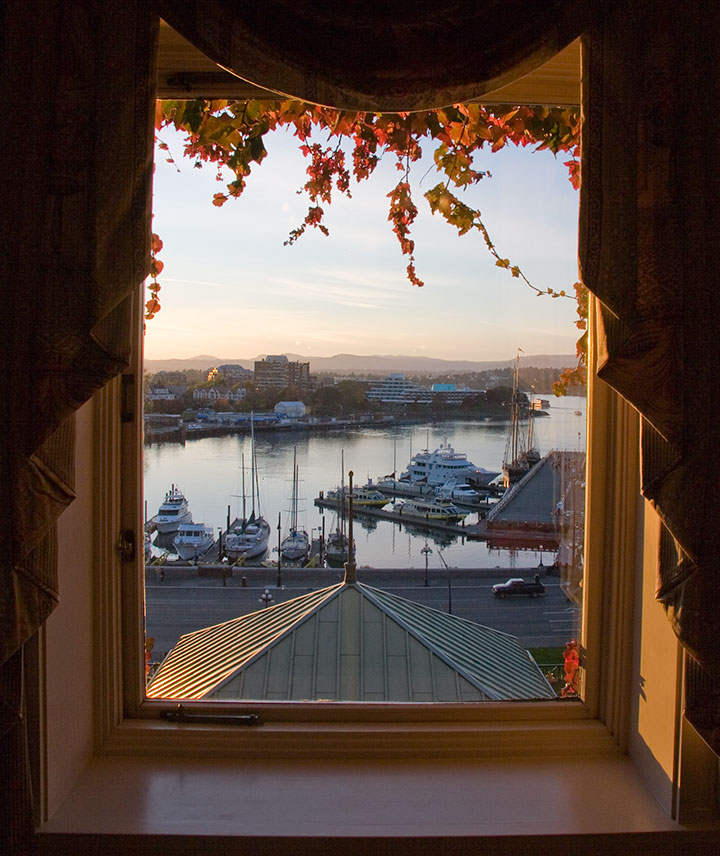
We checked into our hotel,
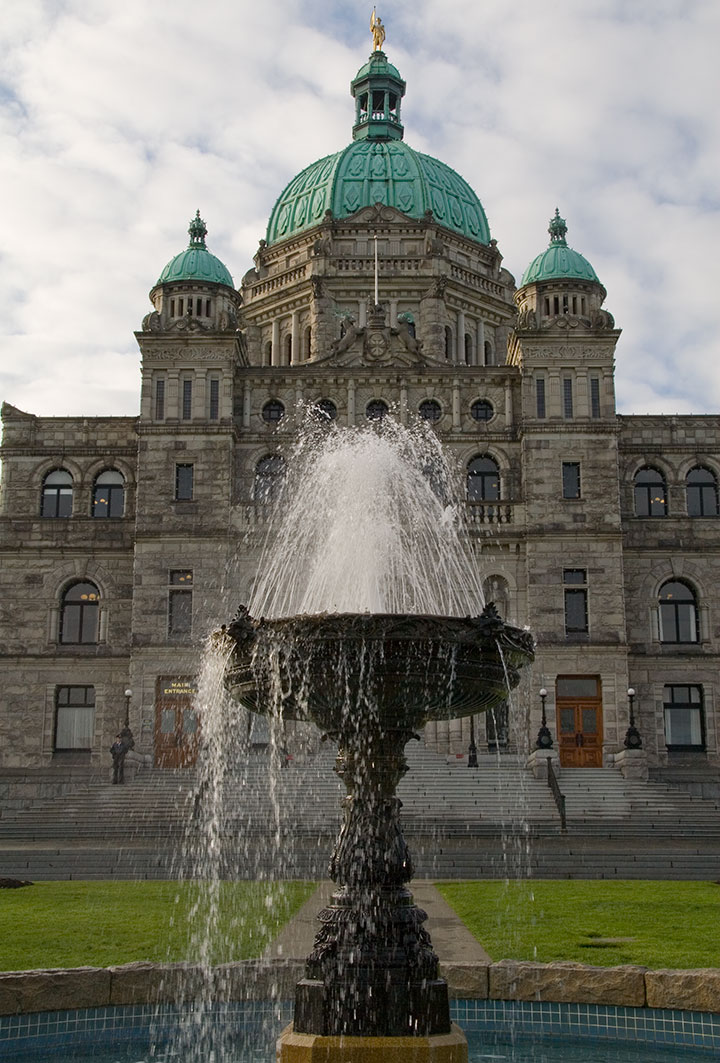
and then set out to see the sights—those just around the corner,
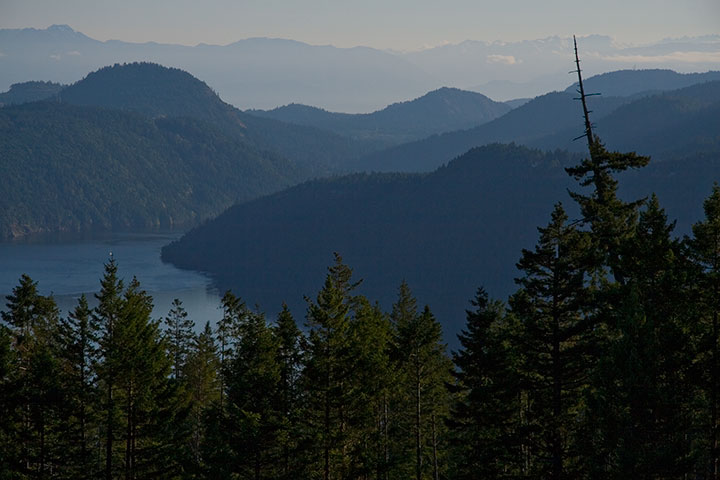
and a few slightly farther afield.
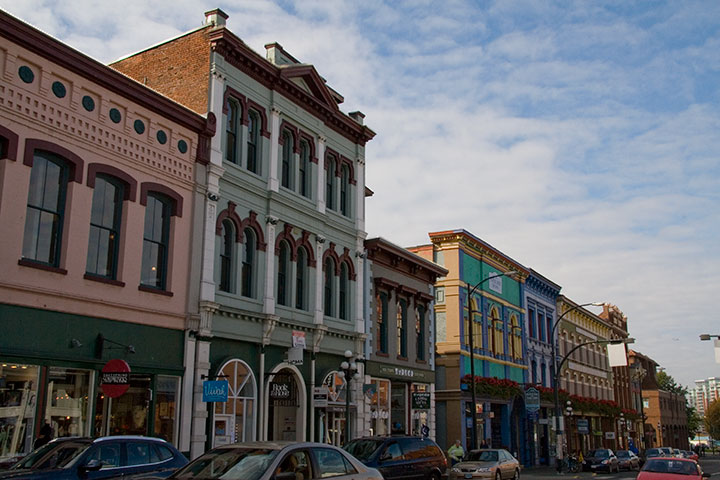
We couldn’t have asked for better weather for exploring the city,
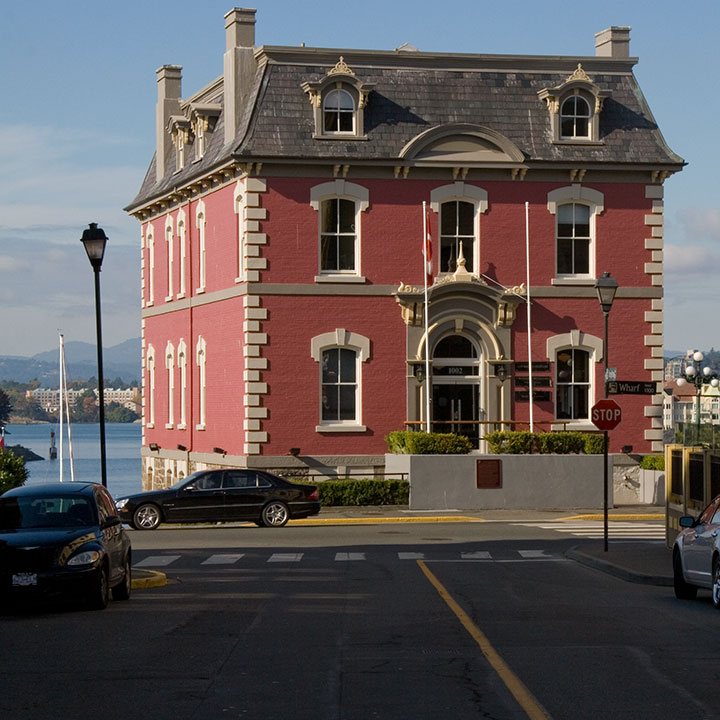
or better light for showing off its photogenic side.
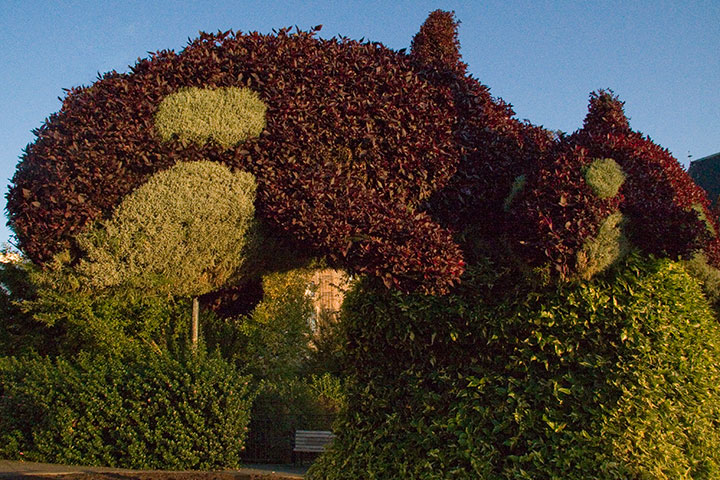
And whenever our overstimulated brains needed a break from all the grandeur, we could turn our attention to sights both quaint—
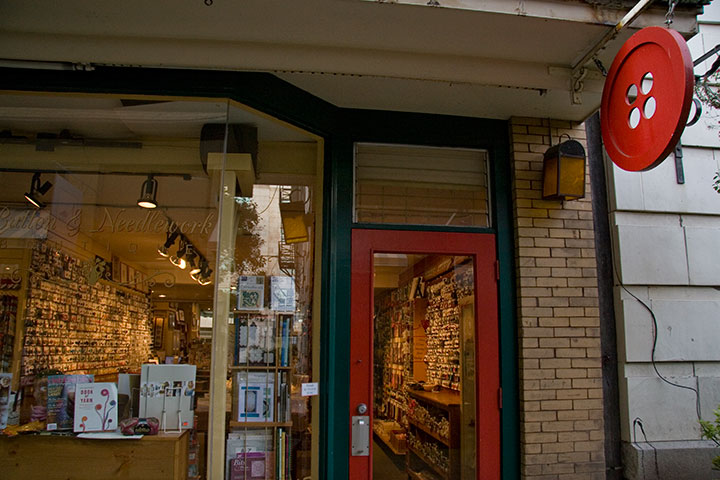
—and cute (as a button).
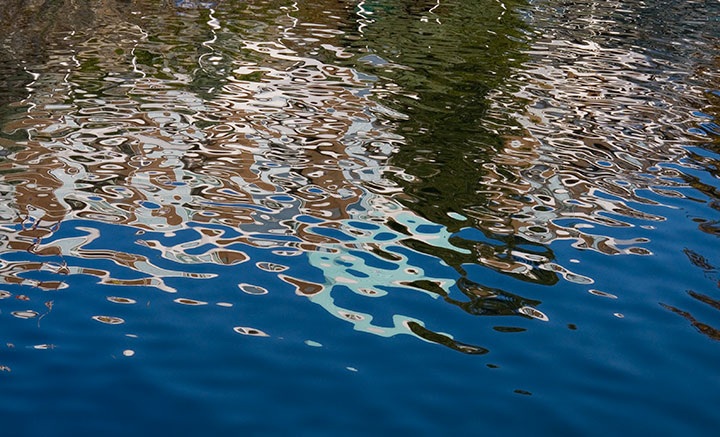
My favorite thing about Victoria, though, was discovering a visual melting pot of Old World and New World,
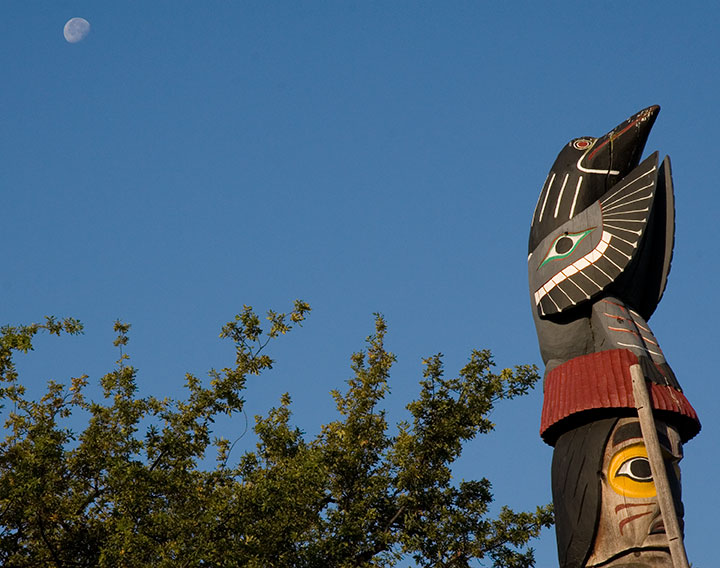
and of East and West.
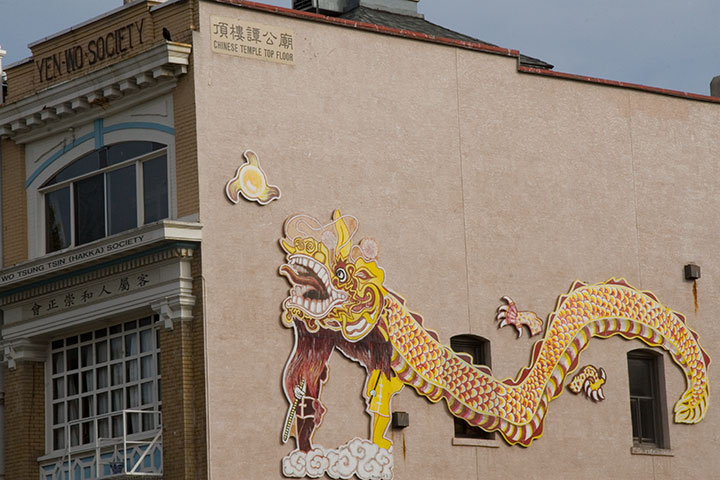
When I think of the American West, what usually stands out in my mind are dramatic natural vistas with little or no human presence. So standing on the other side of the border, and seeing an English-style Parliament complex just a stone’s throw from rugged mountains and First-Nations totems was a little jarring at first glance. But then I realized that Victoria isn’t necessarily a city of contrasts, but something else altogether: a blend of all the best parts of the cultures and environments that have come together here. It was both comfortably routine and utterly foreign at the same time.
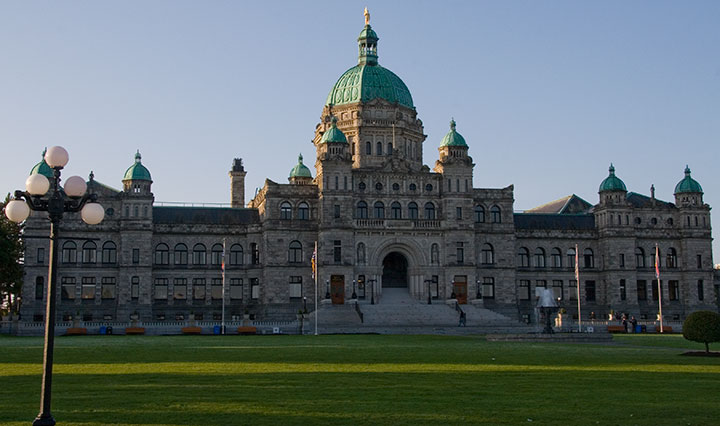
And I remembered that all my experiences in Canada have been like that: an unexpected twist on something very familiar. Always at hand is the feeling of great adventure in a strange land—and the sense that home is just around the corner.
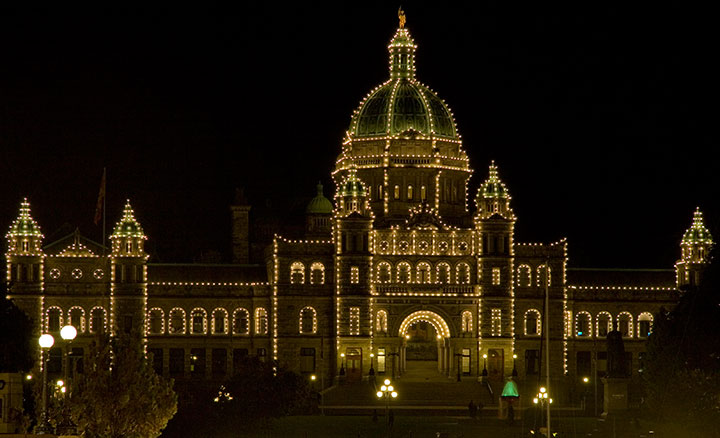
October 17th, 2011
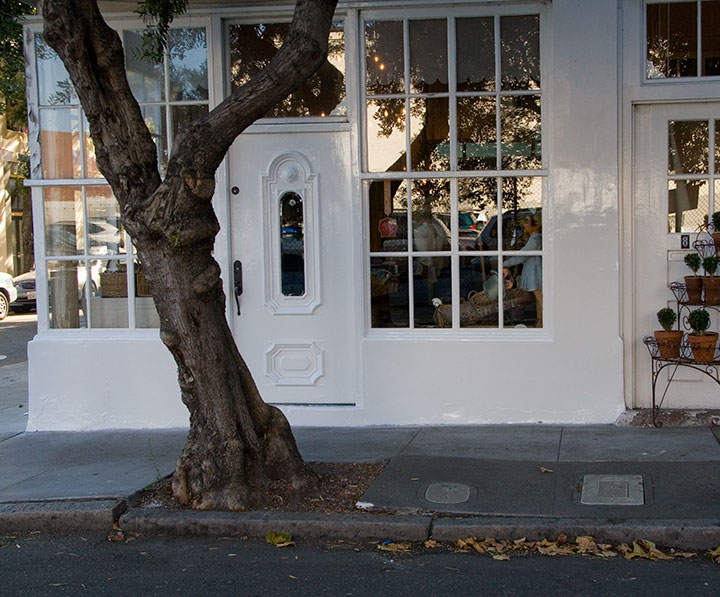
You already know that I have a thing for hidden, quiet spaces tucked away within large cities. So imagine my delight when Jessica turned me onto this place.
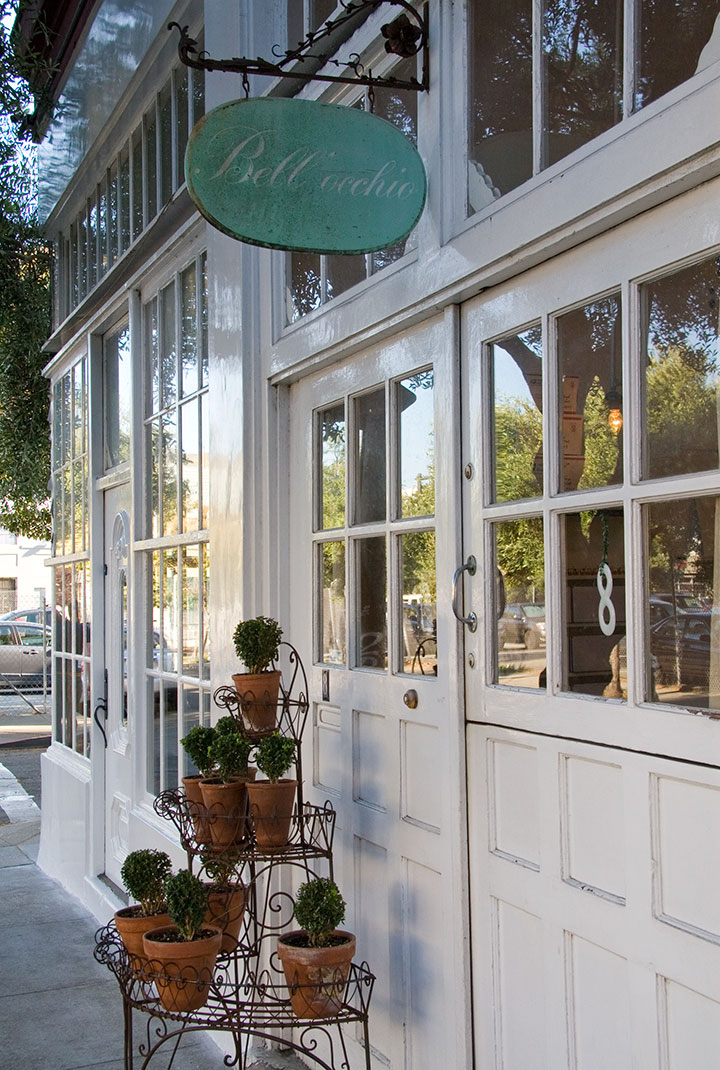
Bell’occhio has quickly become my favorite (and most regularly visited) haunt in San Francisco. It’s easy to miss—it’s just a few steps off of the main drag of Market Street, but the little lane upon which it’s situated is so quiet that it seems transplanted from a different era.
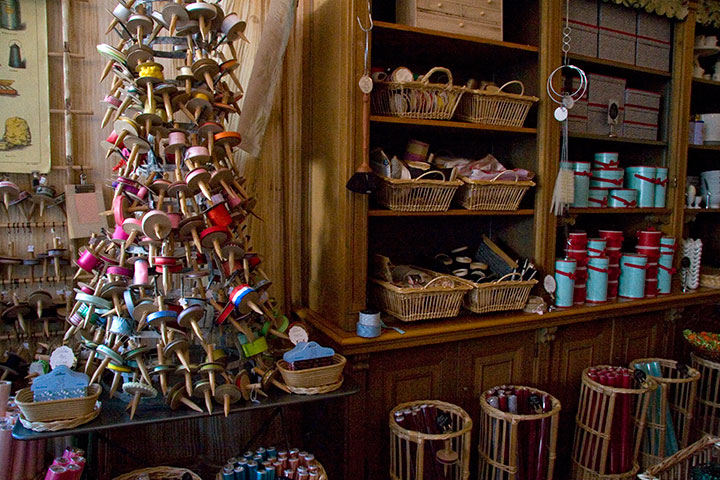
The feeling doubles as soon as you step foot inside the shop. The place is a living, breathing Kunstkammer, with all manner of beautiful odds and ends you never knew you so desperately needed.
My favorite part, though, is the overall presentation. All her inventory is kept in baskets, drawers and wooden cabinets, like a Victorian general store. Each price tag is hand-calligraphed in flowing script. And whenever you purchase something (and I just dare you to visit and not buy something!), your items are packed in vellum envelopes and muslin drawstring bags. Which just about makes me swoon.
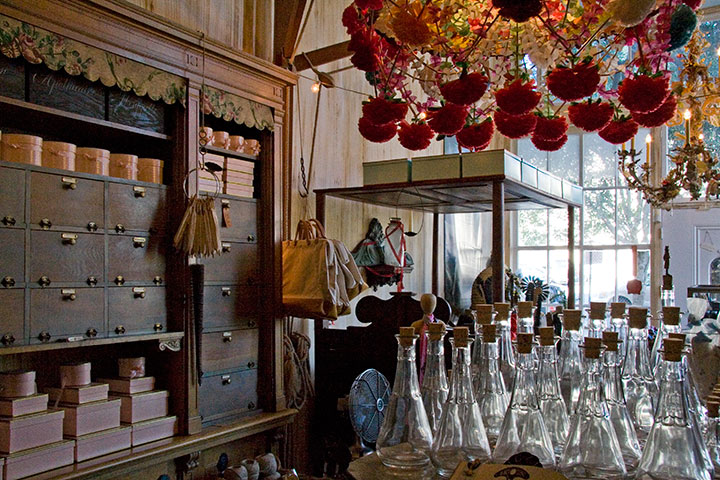
The owner, Claudia Schwartz, was very kind to let me take a few photos and spread the word about the place. She opened Bell’occhio in 1988, but now that this sort of aesthetic is all the rage again, I’m sure she runs a huge risk of having her ideas lifted by copycats. Ever walk into an Anthropologie? I’m pretty sure they stole their whole schtick from her. So Claudia, thank you for allowing me to share your world.

Now, whenever I return to San Francisco, I have a separate Bell’occhio budget—as crazy as that sounds. It’s the one recommendation I can offer if you’re going to come here. Otherwise, this place will have you impulse-buying before you can say, “I’ll take three of those!”
October 14th, 2011
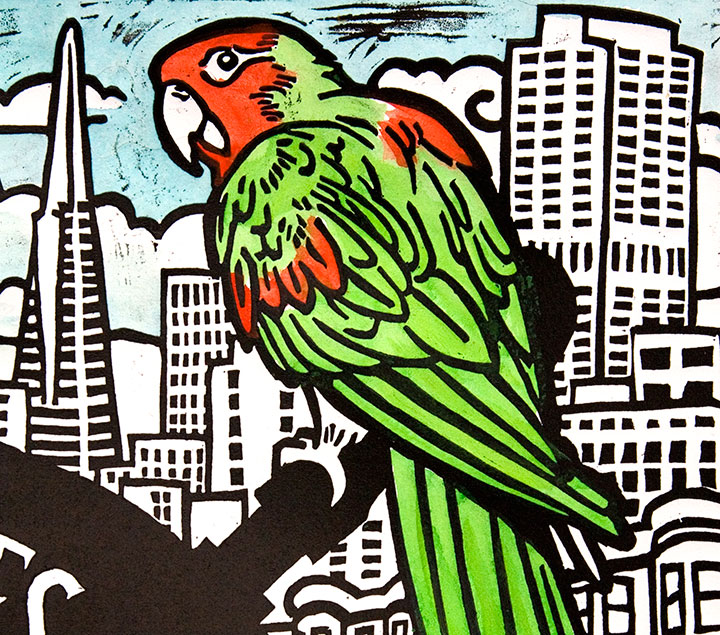
Since I’ve had parrots on the brain for so long, I thought it would make a fitting end to my San Francisco trip to go in search of them. You see, according to legend documented fact, San Francisco has a wild population of feral parrots—if that isn’t nautically themed, I don’t know what is. Yarr!
I’d been told, however, that while popular culture has named them “the parrots of Telegraph Hill,” they didn’t actually spend much time there—so we had no idea where to look for them.
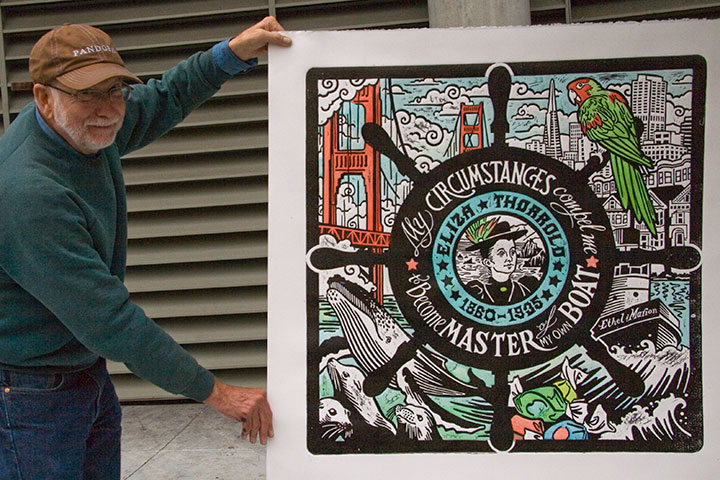
Jessica’s uncle David (pictured here with our print!), who’s lived in SF for decades, came to the rescue. He told me that actually, Telegraph Hill was a good place to look on Sunday mornings in September, and even if I didn’t find any birds, it made for a nice wooded walk.
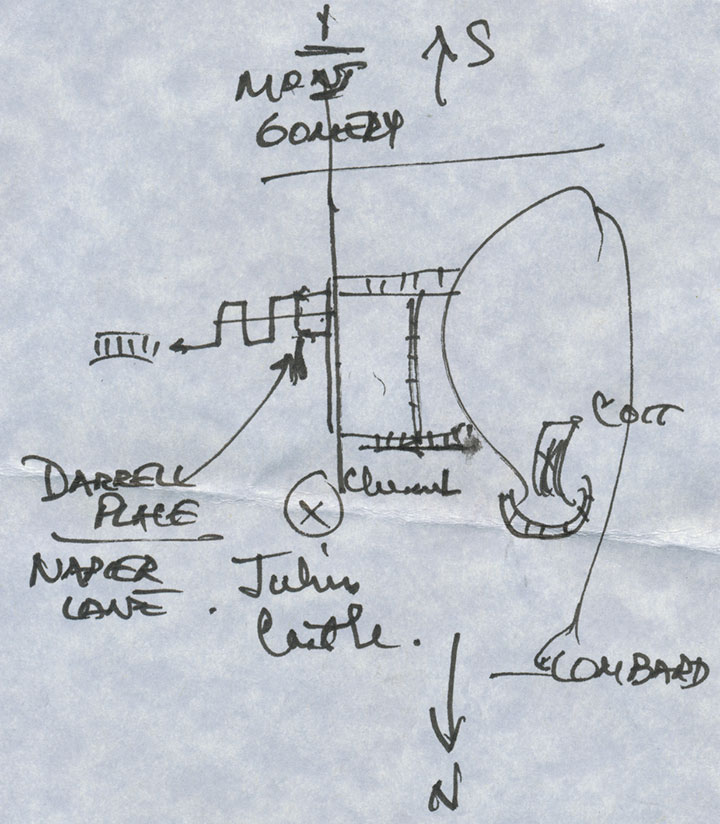
He even scribbled a little map to show me a likely spot. Somehow, that little gesture made the whole thing a hundred times more exciting—I tend to explore cities without atlases or guides (or Googles) anyway, so this little scrap of paper turned a morning hike into a treasure hunt.
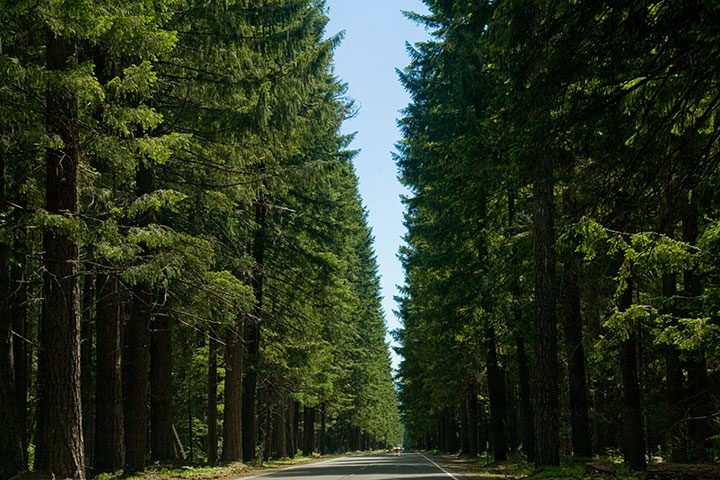
Now, I’m not sure exactly what I was expecting, but I’m a northern gal, so when somebody suggests walking through the woods, this is what pops into my head.
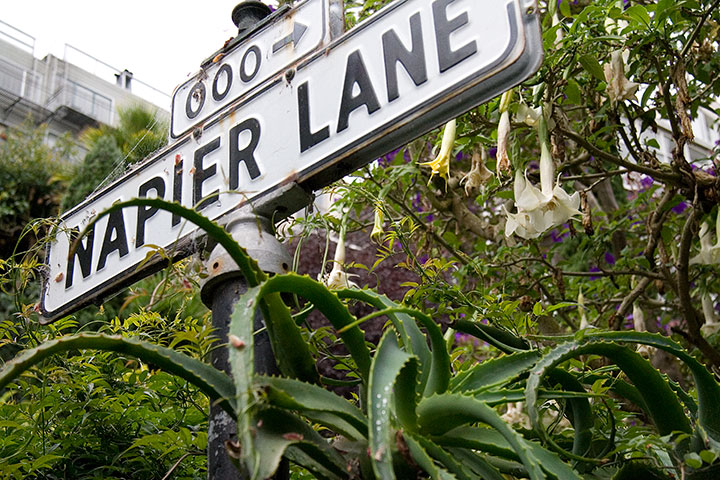
This, on the other hand, was a surprise.
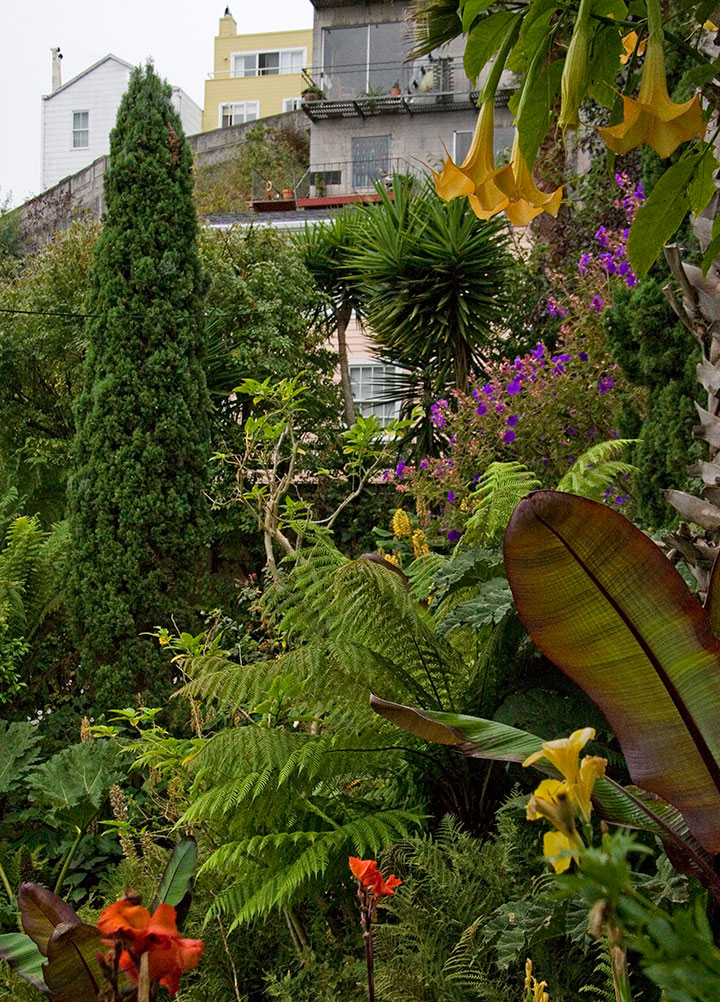
Compared to the mossy pines and cedars in my frame of reference, Telegraph Hill felt like a tropical jungle.
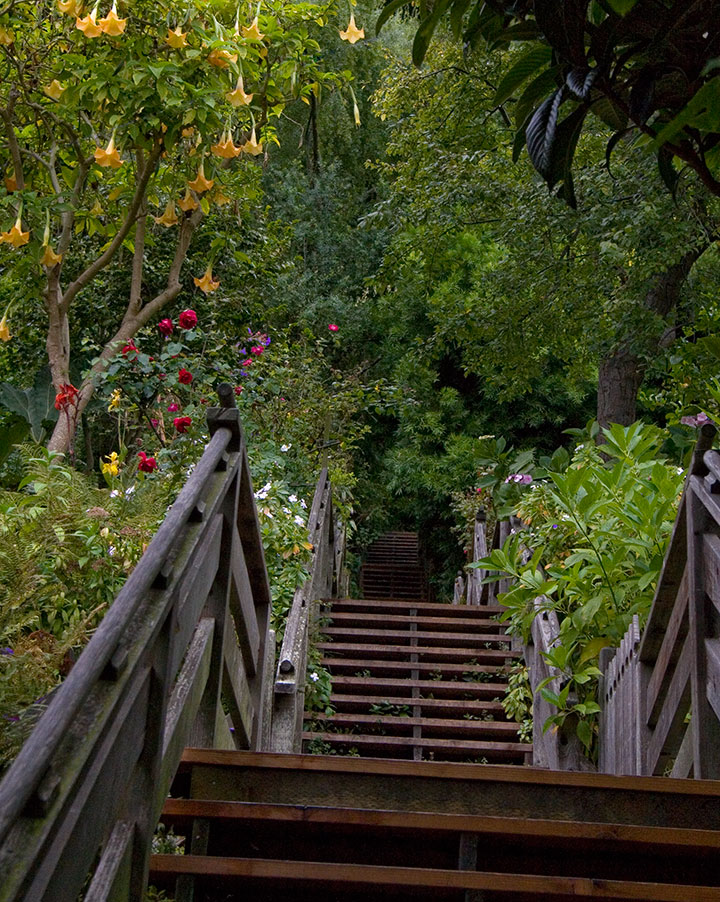
My friends and I had the place almost entirely to ourselves—it was a dark, dreary day, which discouraged all the sun-lovers. So as we wound our way up the steps, it felt like we’d stumbled upon our own private garden, or maybe a path to some other world.
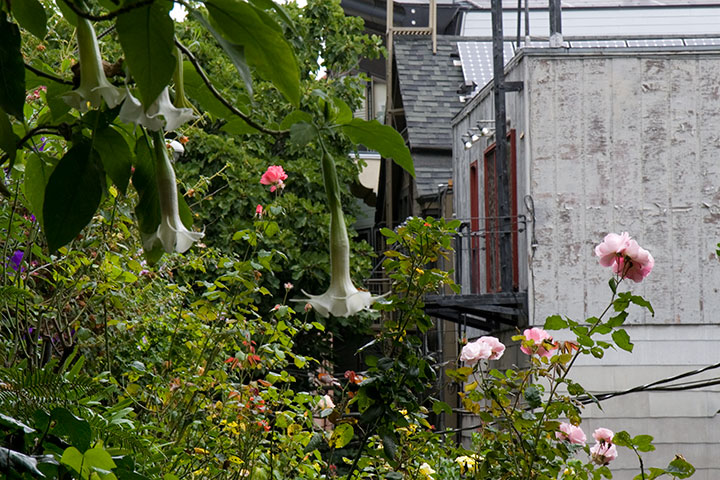
It was easy to forget that we were in the heart of a densely packed city (in California, no less)—this felt more like a secret, slightly English enclave through which we’d been granted safe passage.
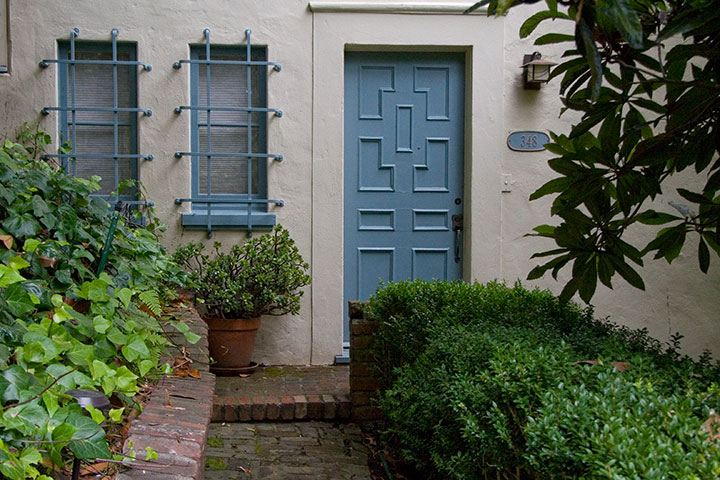
Around every bend was a door, or a courtyard, or another track. Each felt like a gateway to something else, to maybe more and more and more worlds beyond our little slice of perception. It was a hint that what we could see was just the beginning—that what we couldn’t see was out of reach, and all the more tempting for it.
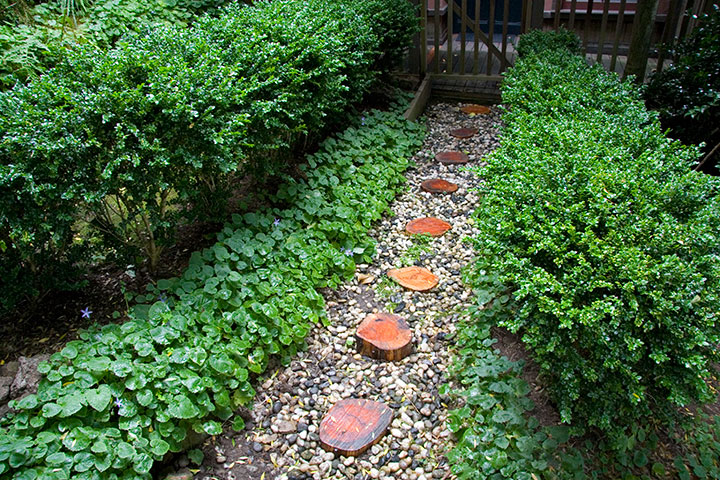
That sort of feeling is just my cup of tea, you know?
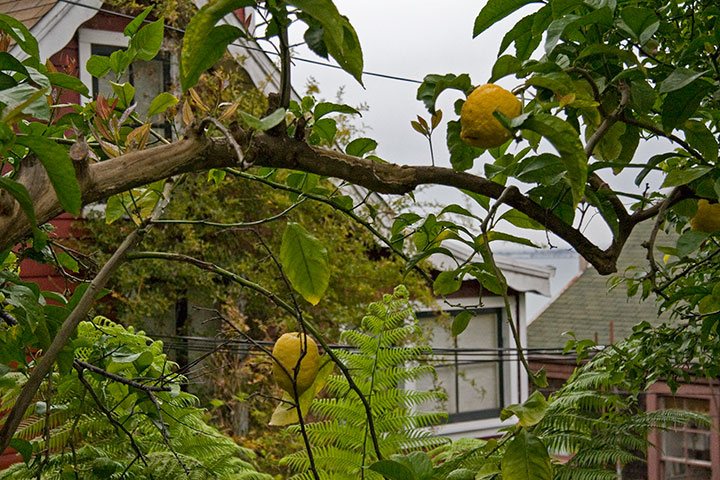
Every time that pleasant disorientation threatened to overwhelm me, though, out popped little hints of where I really was.
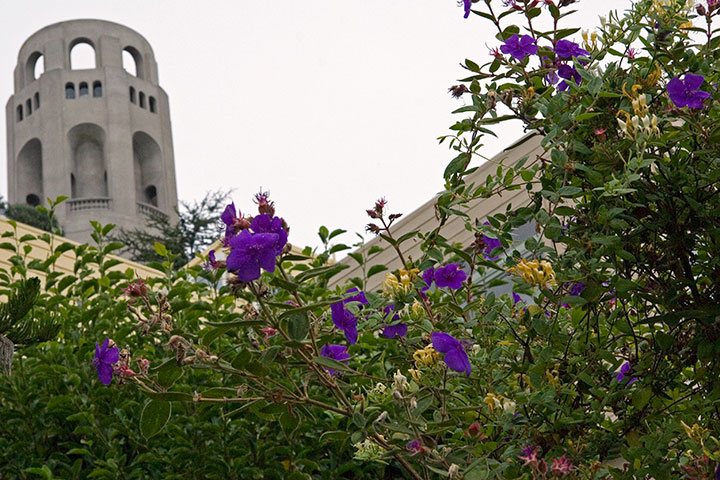
And whenever the trees gave way to open sky, guide posts appeared, showing us the way back—
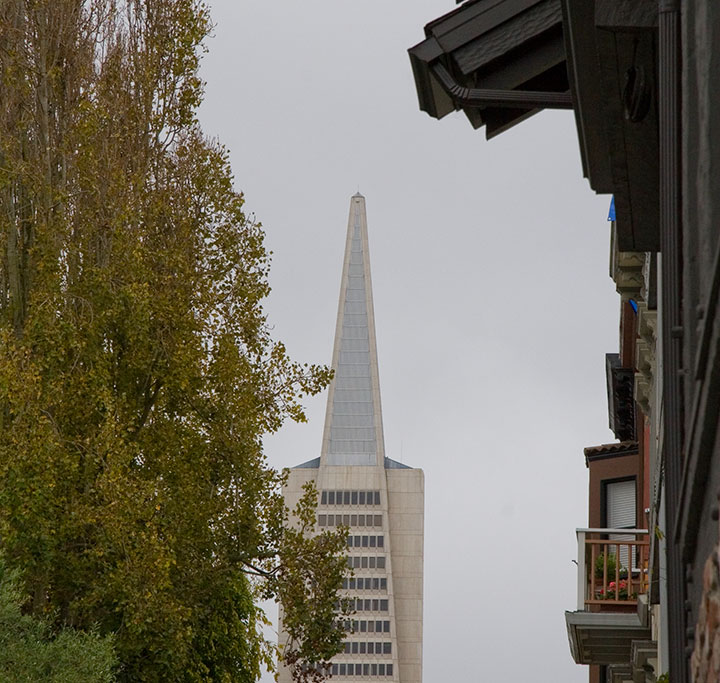
and reminding us that reality was a stone’s throw away.
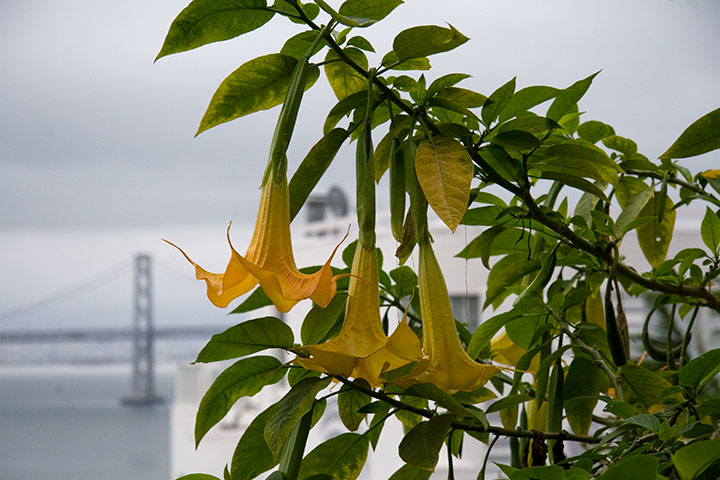
I almost forgot that we were even looking for parrots.
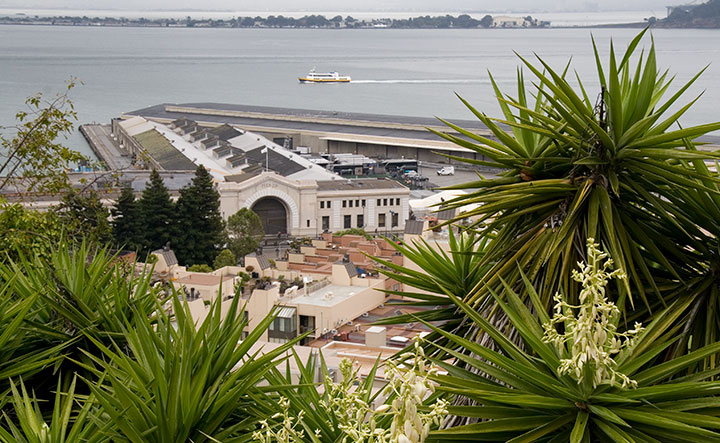
At the top of the hill, we heard a telltale squawking. I glanced up to catch a quick glimpse of two green birds with long tailfeathers speeding away to the west—unfortunately, my shutter finger wasn’t fast enough on the draw.
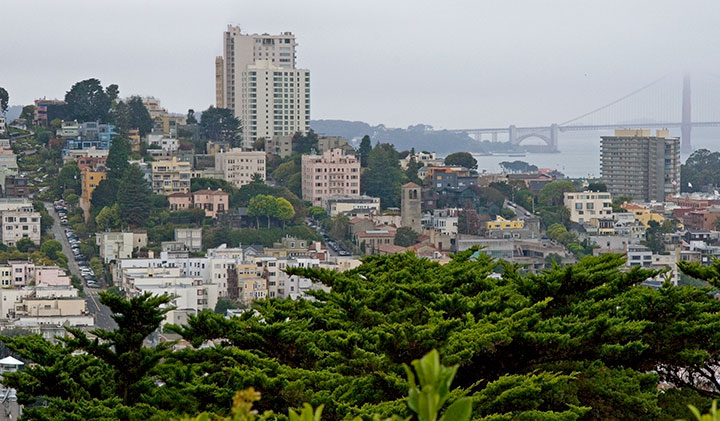
It’s like a ‘Where’s Waldo’ of SF—can you spot Lombard Street? The Golden Gate?
Oh, well. The view alone was the perfect end to the walk.
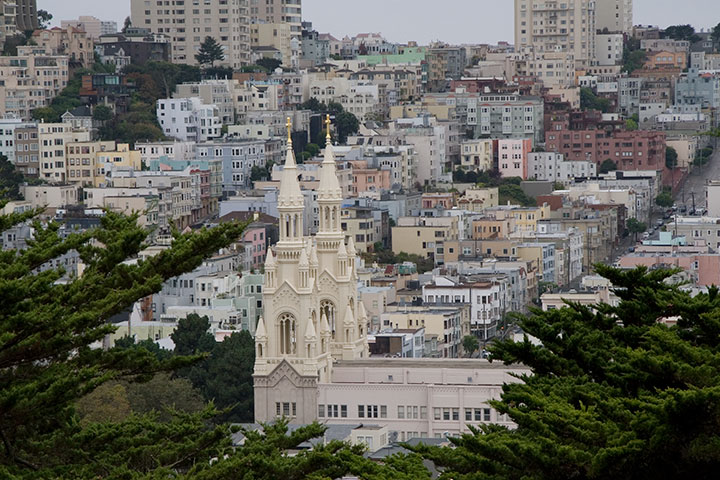
The vista of pastel stucco seemed like a gift, a reward at the end of an uncertain journey. It reminded me of what I love most about the place: that the city itself is like a garden of color—an urban forest in bloom.
* * *
Thank you so much for the amazing response you’ve had to the Apocalypse Calendar! Literally overnight you’ve helped us raise over $1000. We have until the clock strikes midnight on Halloween to reach our goal—thank you for helping us get there!
October 1st, 2011
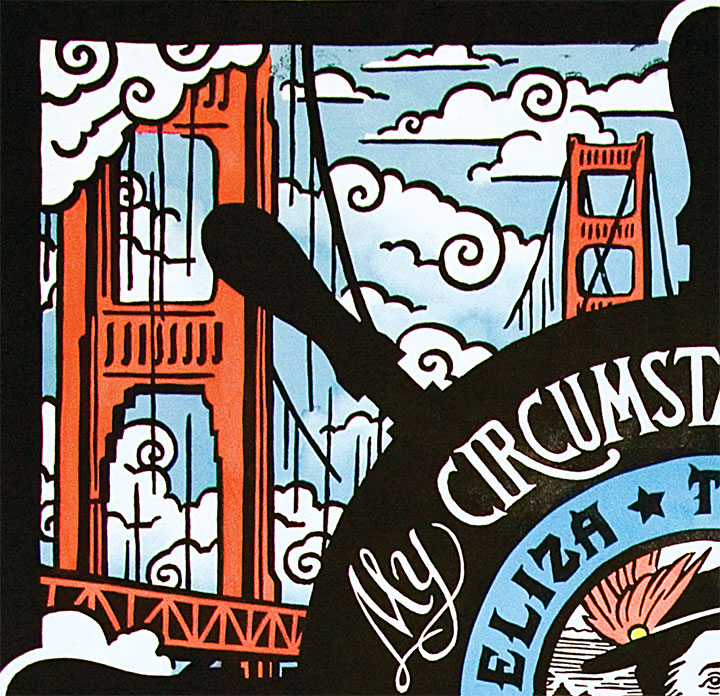
It’s hard to think of a better weekend activity than taking a quick trip to San Francisco.
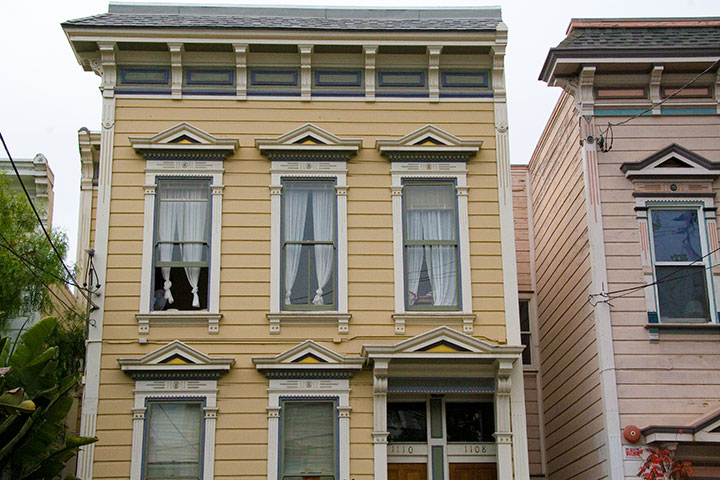
First of all, Jessica and I got to visit the lovely Sarah and Jesse, who live here—
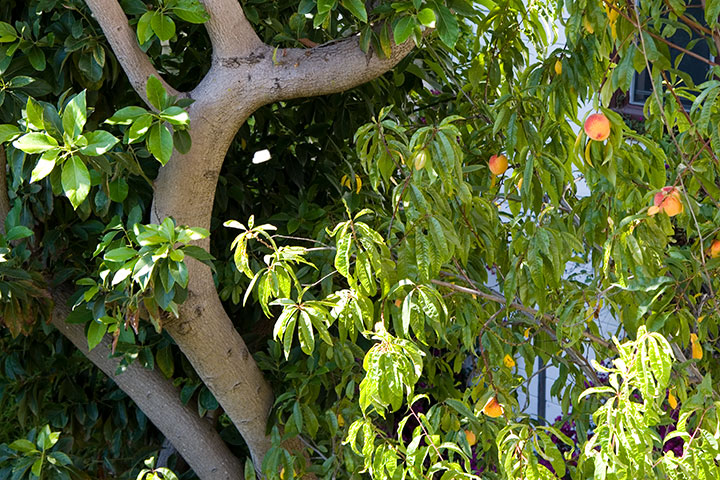
and whose back yard contains this.
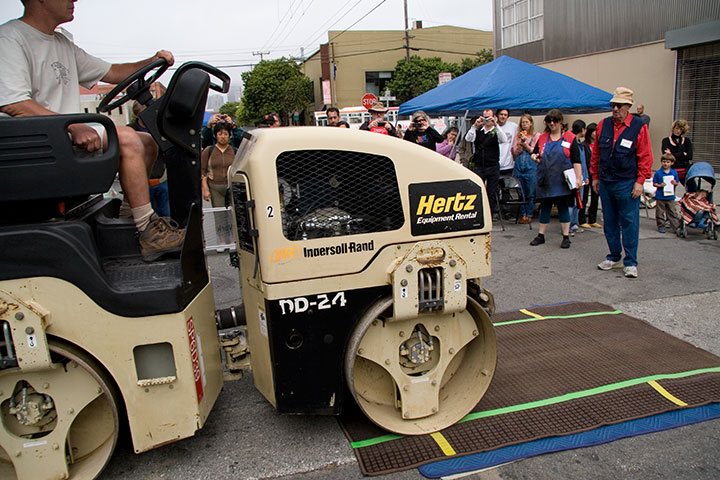
And then we got to raise a fantastic ruckus and make guerrilla street art with a whole bunch of people looking on.
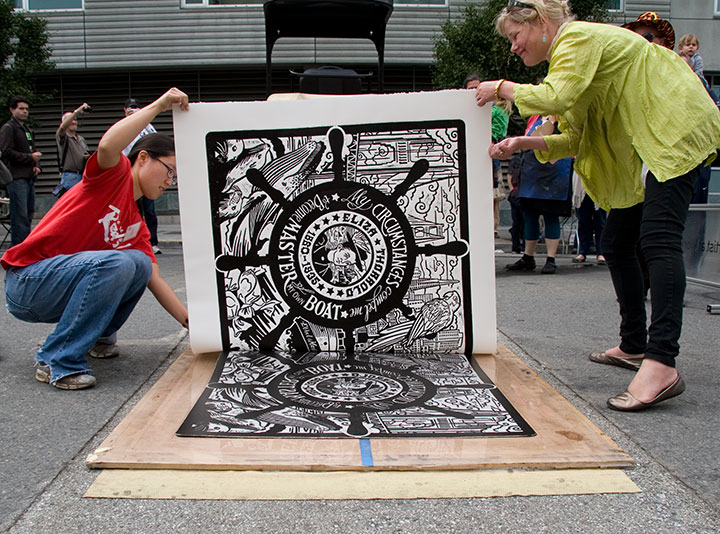
SFCB’s got this thing down to a science. Between the small army of volunteers who took care of the inking and registration (line-up),

and their probably-patented methods for keeping street schmutz off the prints, the results were impressive. In fact, this is my fourth steamroller print (and Jessica’s fifth), and I’ve never seen one turn out this well before.
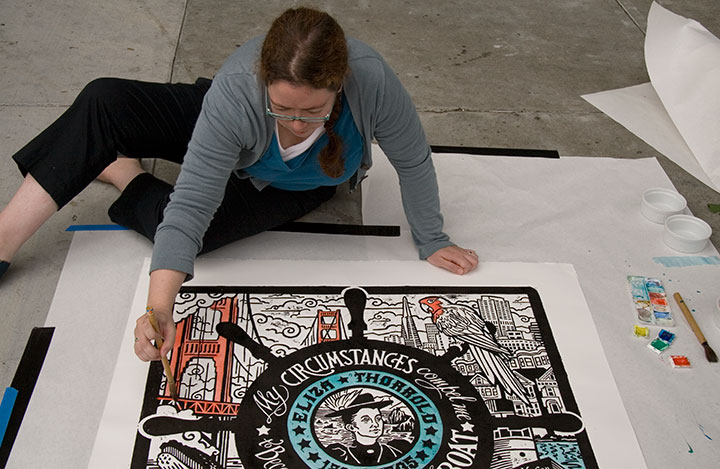
Photos of us by Jesse Mullan
Besides, we really needed to keep our hands clean this time, because we upped our personal ante and just plunked ourselves down on the sidewalk for a bit of on-the-fly hand-coloring (though avoiding the very wet ink felt kind of like playing Twister).
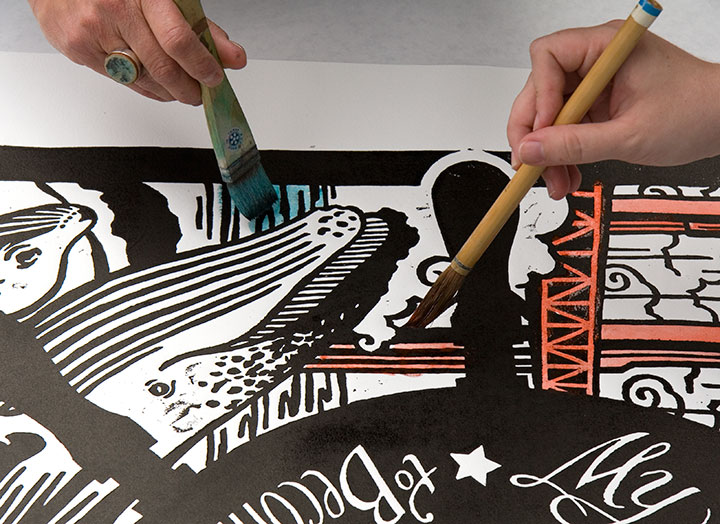
That turned out to be the perfect tag-team job, actually. I do a lot of hand-coloring when I print, as you know, but never anything this big—
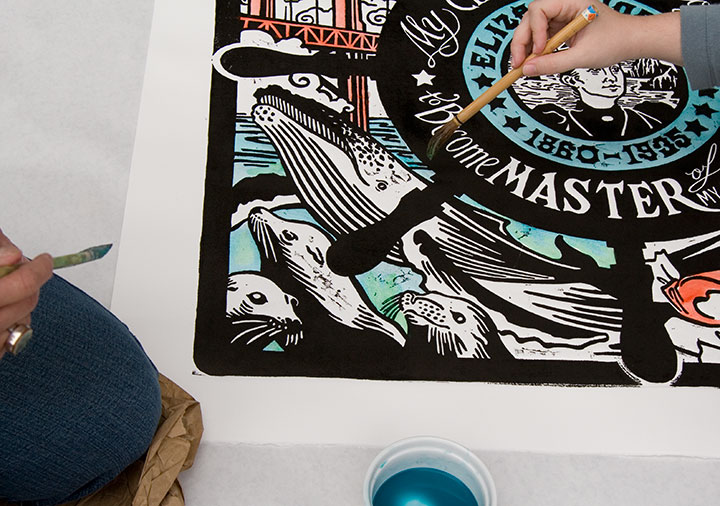
having two sets of hands to blend colors and two sets of eyes to look for missed spots was definitely the way to go.

So thar she blows. Let me introduce you to Eliza Thorrold, and our latest honorary Dead Feminist print, Even Keel. Eliza was the first licensed female tugboat master on San Francisco Bay. After Charles, her husband who piloted the Ethel & Marion before her, died an untimely death, she fought for and received her operator’s license to continue their tug business in his stead and provide for her family. Her quote says it all: “My circumstances compel me to become master of my own boat.” Hear, hear, Eliza.
After she left the high seas and entered retirement as a landlubber, she became master of her own taffy pull by opening a successful ice cream and candy shop with her son. Hence all that salt water taffy. And as if the nautical sweet-shop theme weren’t enough, we couldn’t resist throwing in all our favorite things about San Francisco. So go hunting around the image, and see what you turn up. Then, on your next trip to the City by the Bay, learn more about Eliza’s life (and those of other women mariners) at San Francisco Maritime National Historical Park.
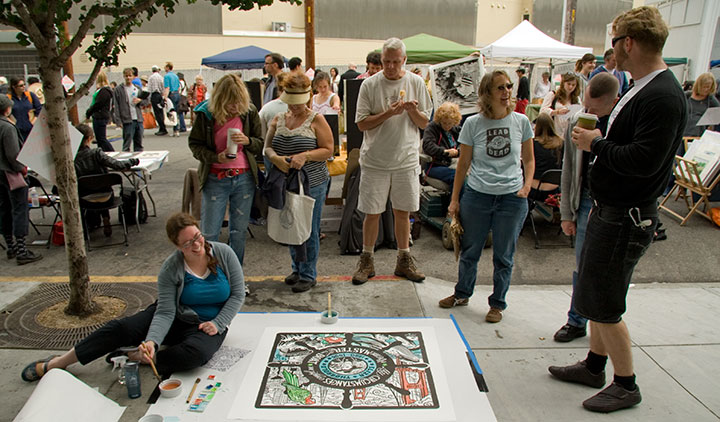
So, yeah. It might not fit the traditional idea of a productive weekend, but it’ll do. We came away with new friends, blue fingertips and a whole lot of ideas to make our own humble little steamroller party better.
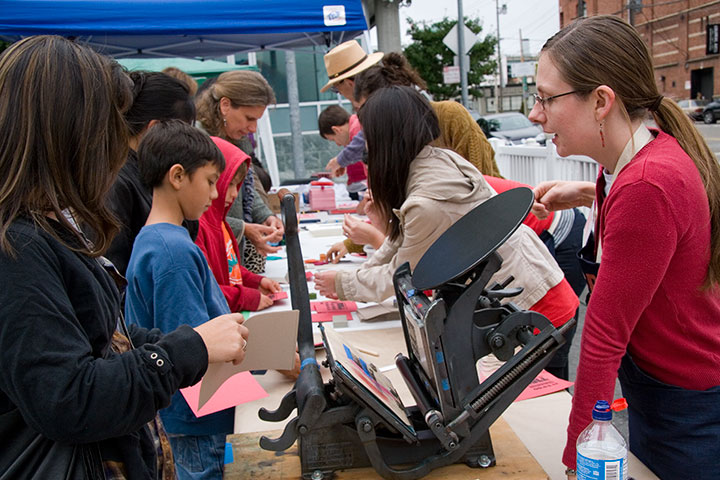
Many thanks to all the staff and volunteers of the San Francisco Center for the Book, who made the day a smashing success—
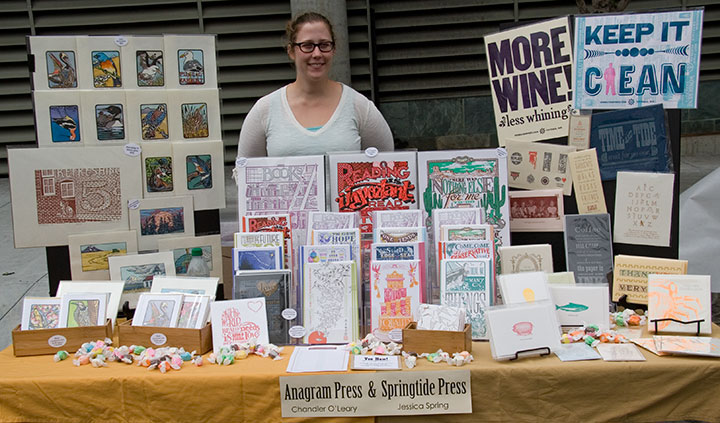
and to all the kindred spirits who lent a whole bunch of helping hands. Like the super-nice TSA employee who took such great care of our linoleum block and didn’t bat an eye that we had to bring something so huge and bizarre onto an airplane. Like Sarah, who manned our table; and Jesse, who shot most of the photos; and the huge, huggable posse of Jessica’s extended family, who helped schlep things and kept us company and bought us beignets. And especially Jessica’s ten-year-old niece, Luciana, who basically designed our table arrangement. ‘Ciani, you’re one awesome ragazza.
And of course, to Eliza—thanks for standing proud at the helm.
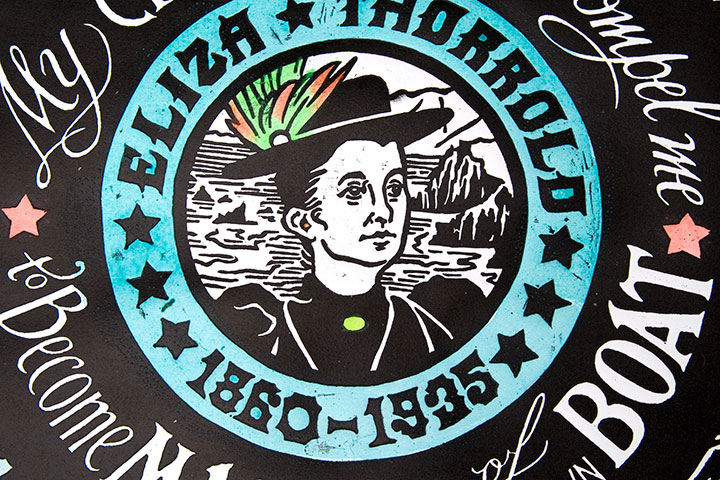
September 22nd, 2011
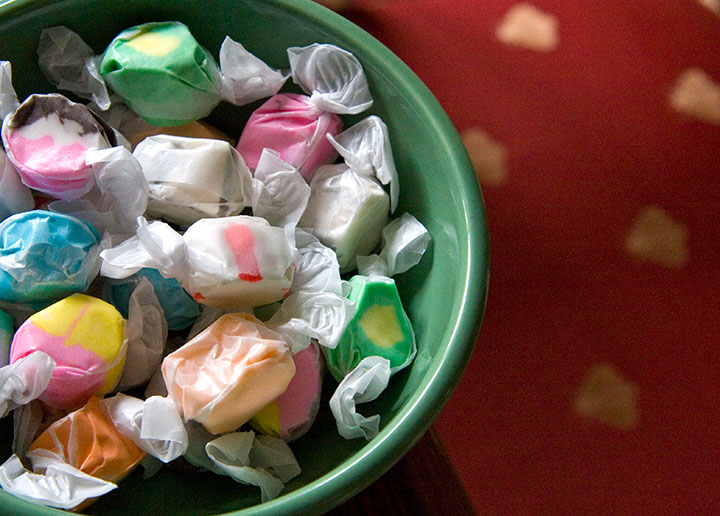
Splurging on a giant bag of salt water taffy is probably a weird way to research a new project, but I swear it’s relevant.
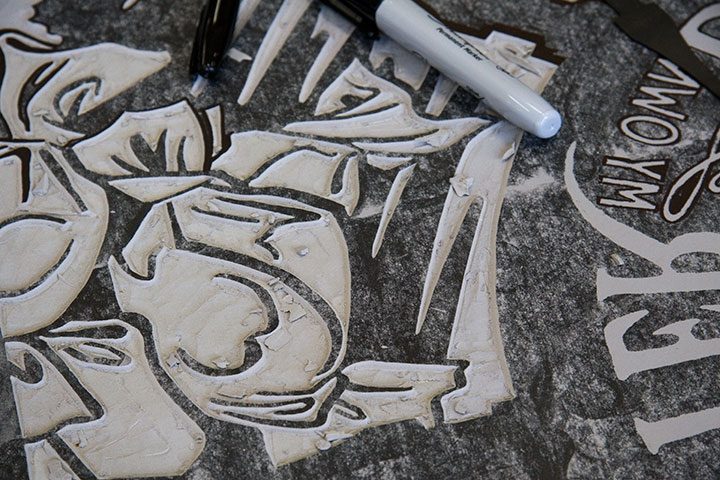
That’s right—Jessica and I are carving again. We’ve been invited by the good folks at the San Francisco Center for the Book (big shout-out to the amazing Rocket!) to be among the featured artist at their eighth-annual Roadworks festival this weekend! Needless to say, we’re super excited.
So if you’re in the Bay Area, swing on by the Potrero and check it out—it promises to be a real hootenanny. The party will be taking up a whole block, chock full of artist vendors, food carts, letterpress demos, and, of course, steamroller printing! And since these guys are rumored to be the original, no-kidding inventors of steamroller printing, they’ll show you how it’s done, for real. Here’s the scoop:
Roadworks 2011
Saturday, September 24
12 to 5 pm, Free!
Hosted by the San Francisco Center for the Book
Rhode Island Street, between 16th and 17th Streets
San Francisco, CA
As a bonus, stick around afterward for a gallery reception for the steamroller prints at 6 pm. There’ll be drinks, music, and a whole lot of loopy artists covered in ink.
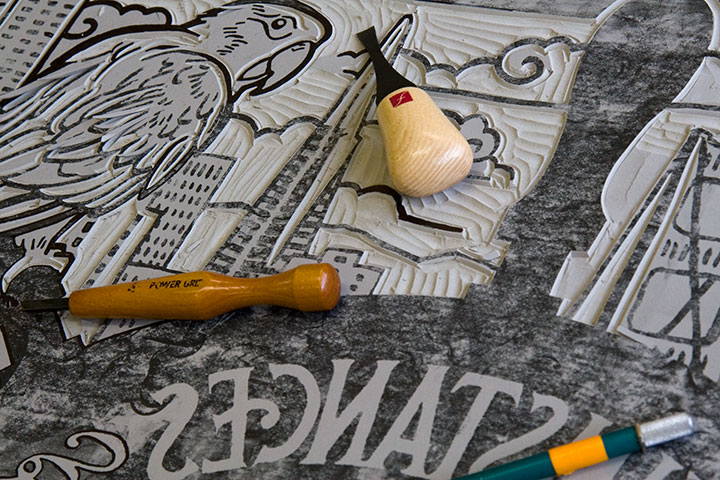
We’ve designed a brand-new, San Francisco-themed, honorary Dead Feminist for the occasion. I won’t reveal who she is until we get back, but here’s a hint: she knew her way around a fo’c’sle and a taffy pull equally well.
And of course, in honor of our muse, we’ll be sharing that salt water taffy at our table. It’s the good stuff, we promise. (Well, we had to sample it, didn’t we?)
See you in San Francisco!
September 17th, 2011
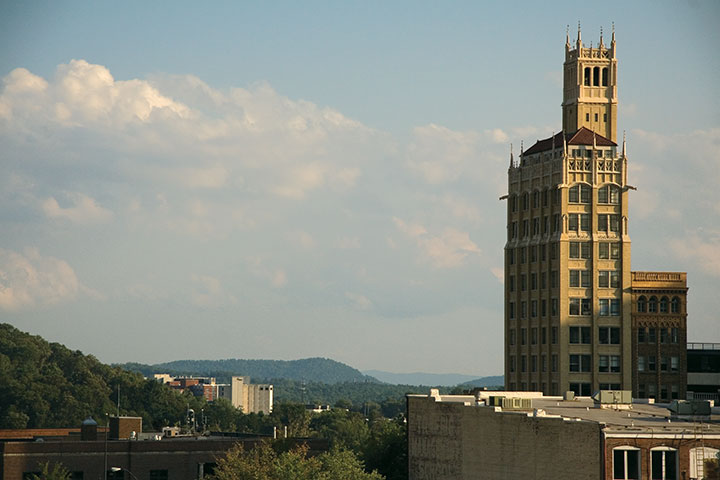
Many of my favorite towns (Boulder, Missoula, Portland, the other Portland, Duluth, Tacoma, Providence, etc.) seem to be kindred spirits to one another. There’s something about the coming-together of historic architecture, blue-collar grittiness, a population full of creative types and surrounding natural beauty that … well, for which I’m a total sucker. So based on all the reports over the years I’ve had about Asheville, I knew it was going to be my kinda place.
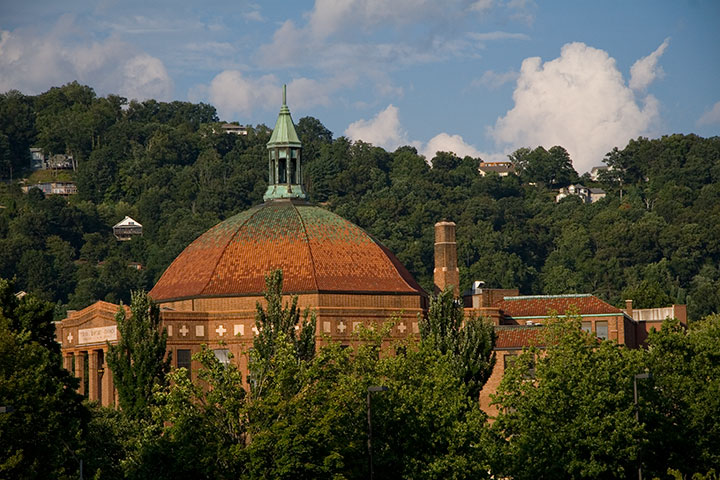
When Jessica and I were there last month for the Ladies of Letterpress Conference, we made sure to give ourselves plenty of extra time to go exploring.
Asheville is nestled in the thick of the Blue Ridge Mountains, which turned nearly every direction we looked into a beautiful panorama.
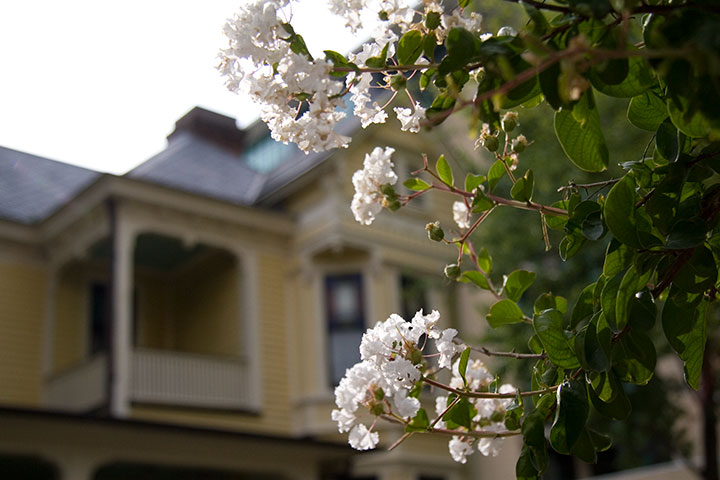
The lush, southern climate gave us the feeling that we were walking through an urban greenhouse. Everything was in full bloom and living color.
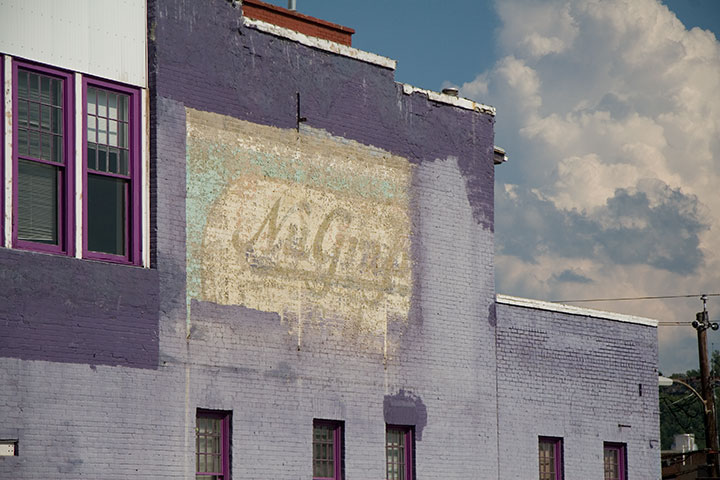
The city’s history is visible around every well-preserved corner.
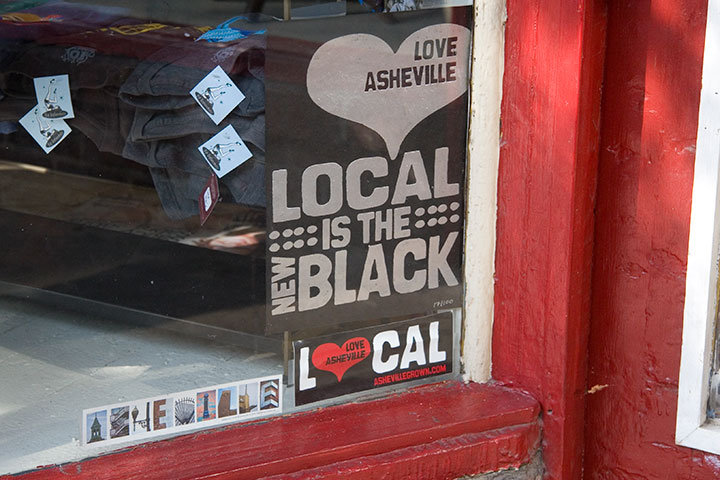
Unfortunately, that preservation is often an accidental outcome in towns that are slowly withering—but that was far from the case here. Despite an economically troubled past, Asheville is a vibrant, active city, complete with a fierce sense of local pride. We saw some variation of these signs in every shop and restaurant window, over and over again. (Hint, hint, Tacoma!)
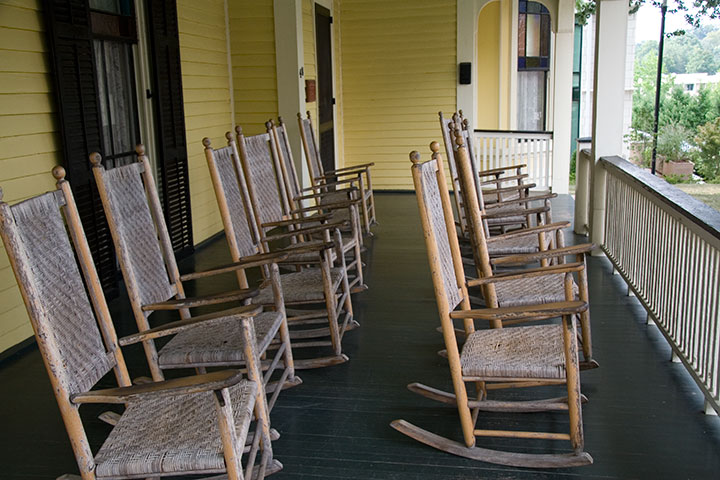
But above all, there was a comfortable sense of down-home warmth in every quarter. Everyone we met was sweet as pecan pie, and the whole place seemed to invite us to settle in and relax. And the rocking chairs! I swear, we saw them everywhere—even at the airport! That’s a tradition I can get behind—I mean, sit down upon.
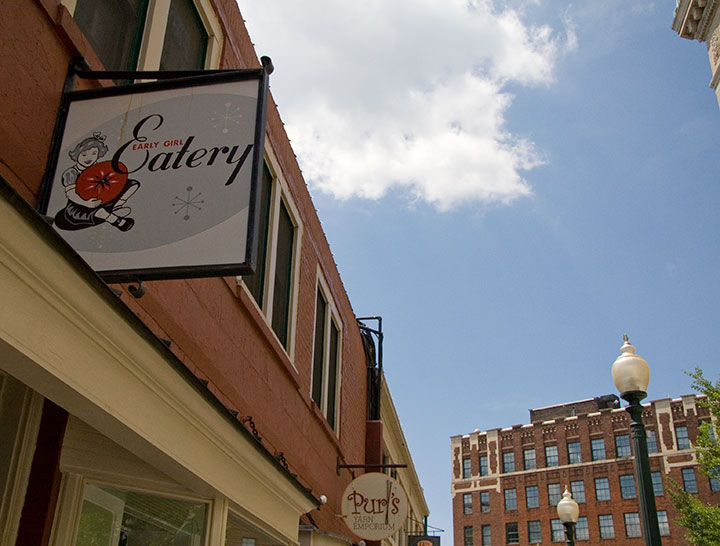
I could go on and on all day about Asheville’s charms as a city, but what I really want to talk about is the food. Oh, the food. And I know that saying so doesn’t exactly make me your typical Yankee, but I have a real thing for Southern cuisine. And after trying a new restaurant at every interval for five days, I’m convinced that it’s nigh impossible to have a bad meal in Asheville.
I’ll never understand the point of chain restaurants. When I travel, I’m not interested in the generic food you can get anywhere in America—I want local flavor. When in Rome, you know? So whenever I’m in a new place, I usually order whatever the restaurant is particularly known for, which is often some sort of local specialty. It’s never steered me wrong yet.
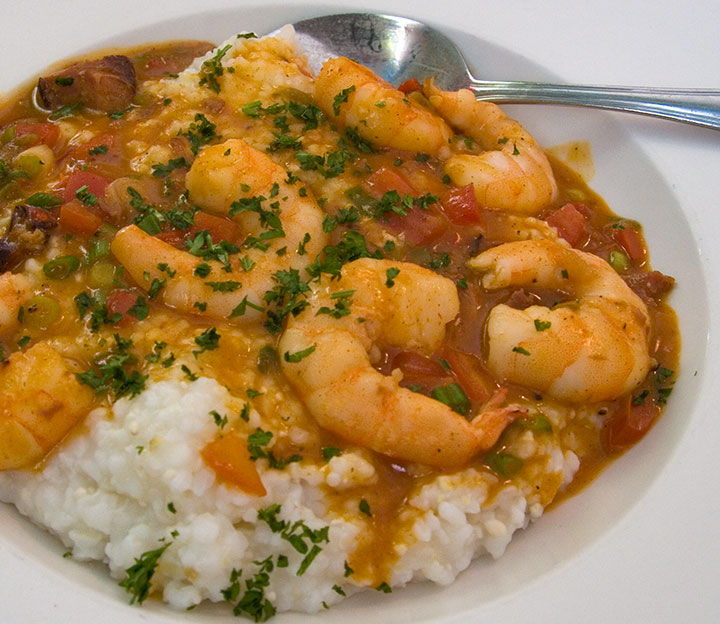
So at the Early Girl Eatery, I had the shrimp n’ grits. What’s more Southern than that? And more importantly, what could possibly be more tasty? As if that weren’t enough, the garnish on the grits was the fact that everything on the menu was locally source, and whenever possible, organic. Plus, they served the real, no-kidding, hard-core stone-ground coarse grits—the ones the Tailor and I love so much that we actually order them from a North Carolina mill and have them shipped out west as one of our staple grains. (Yes, I know we’re weird.)
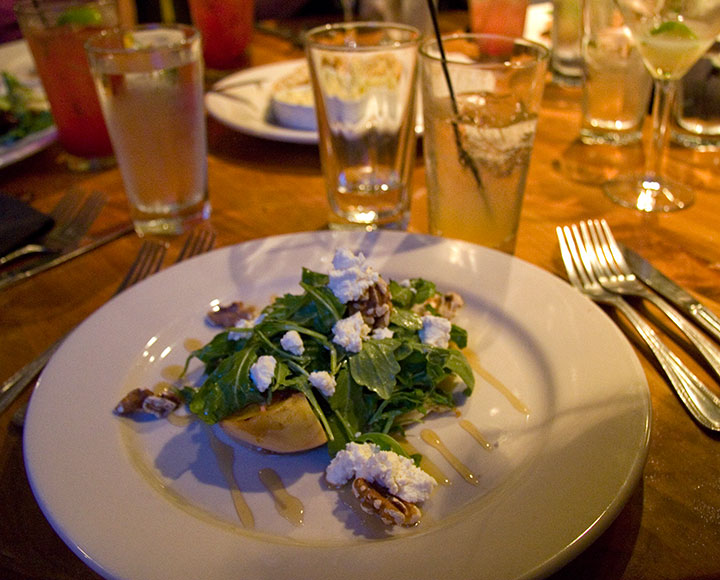
The Southern boasted both local and seasonal fare (and terrible lighting for photographs, sorry), and their peach, pecan, goat cheese and honey salad was like summer on a plate.
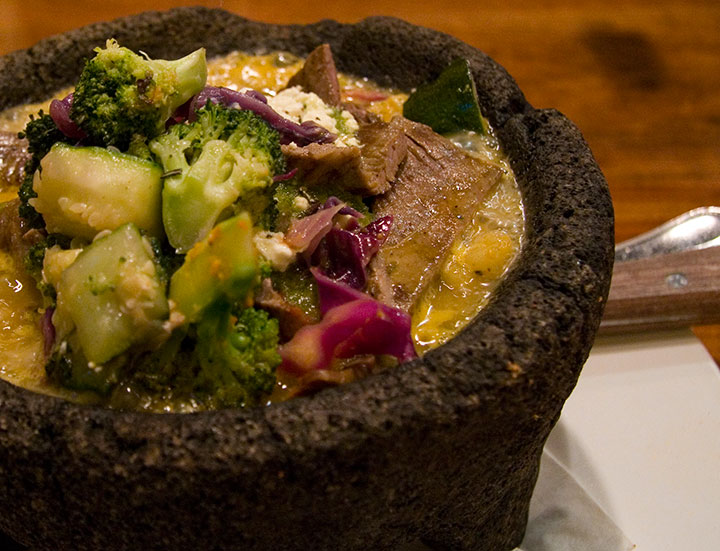
When a large group of letterpress folks joined us at Salsa’s, Southern cookin’ wasn’t exactly on the menue, but I stuck with my rule-of-thumb about the house specialty, and as usual, it was the right choice. This time I ordered their famous molcajete, a traditional Mexican mortar-and-pestle carved out of basalt, heated to something like earth-core temperatures, and filled with a molten and unbelievably delicious stew. The secret ingredient was goat cheese again, which is always a-okay with me. Besides, for someone who loves nerdy scientific things like specific heat, this dinner took the cake—even though it was nearly an hour before I could eat it without my face melting.
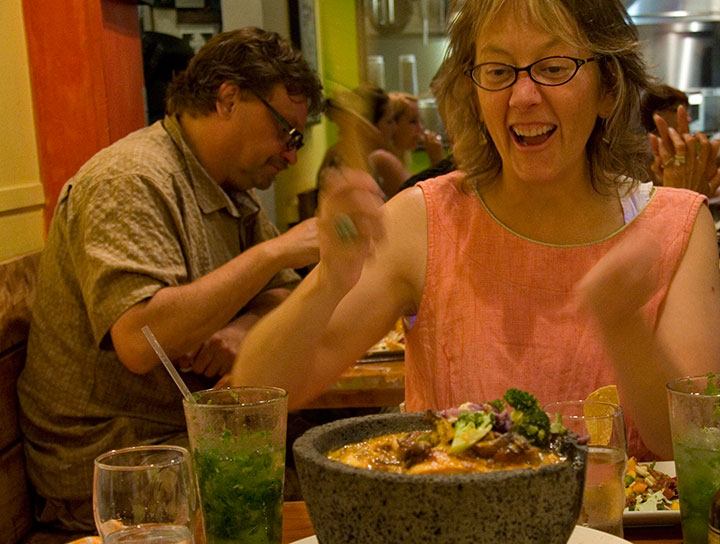
(Jessica was a fan of the molcajete, too.)
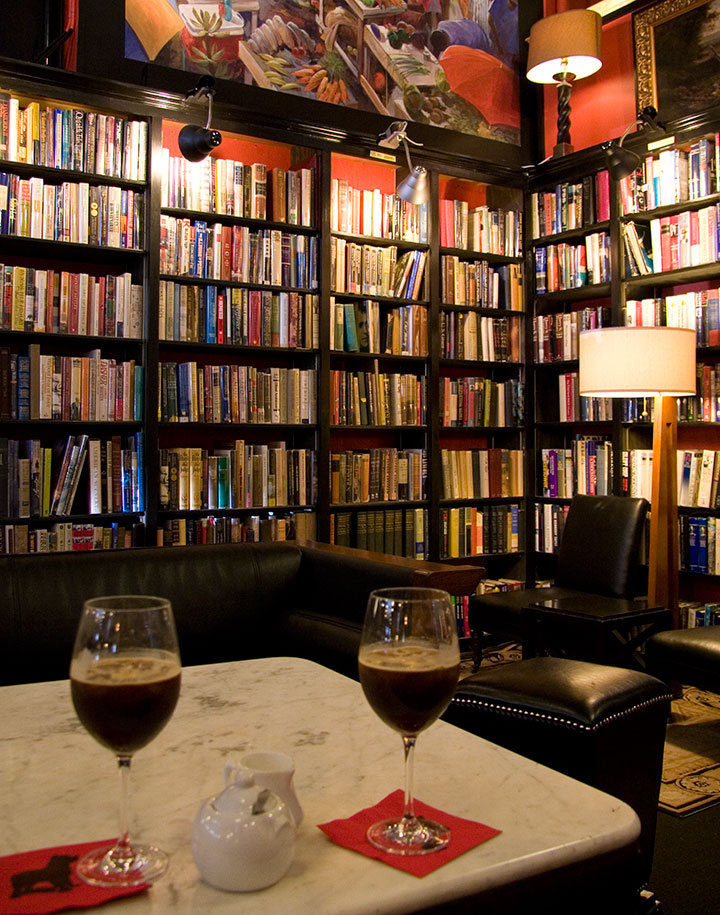
Now, I like lemonade, sweet tea and unsweet tea as much as the next gal, but I’ve always been a coffee drinker. And after three years as a transplanted Northwesterner, I’m a total convert to the coffee culture; a late-morning walk just doesn’t feel right without a cuppa. It was 95 muggy degrees outside, so an iced Americano hit the spot—and at the Battery Park Book Exchange, they’ll serve it to you in snazy wine glasses and let you while away the whole caffeinated day paging through the impressive North Carolina section.
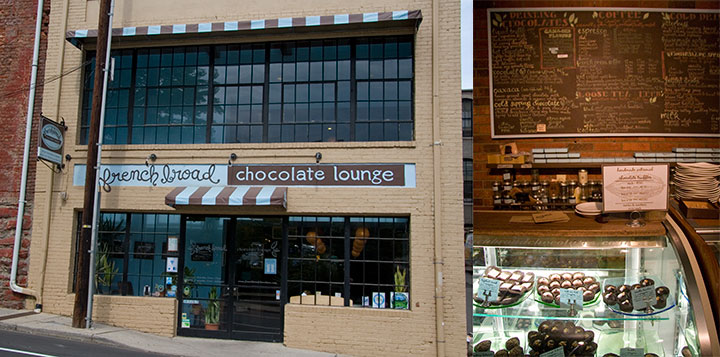
One of the people we befriended at the conference is an Asheville native who let us in on the secret about where to get the best dessert in town. Handmade chocolates. ‘Nuff said.

Still, it was the Southern classics I was the most hungry for—like this gigantic sweet potato pancake at the Tupelo Honey Cafe. It came garnished with spicy pecans and escorted by a side of grits with—you guessed it—goat cheese. Like nearly every other meal I had in Asheville, it was light and deftly made (though impossible to finish!), and completely unlike the heavy, greasy stereotype people have in their heads. With each bite I was more and more baffled by the idea that anyone could dislike Southern food.
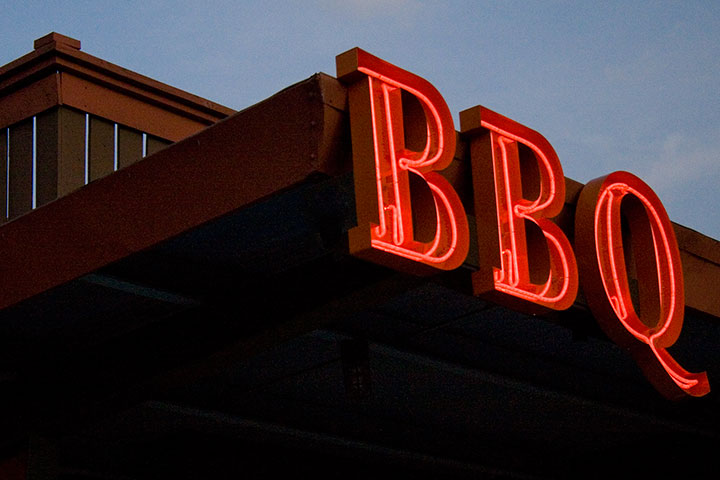
Of course, no sojourn below the Mason-Dixon Line would be complete (for omnivores, at least) without a taste of authentic, heart-attack-inducing Southern barbeque. To get our fix, Jessica and I headed for Luella’s.
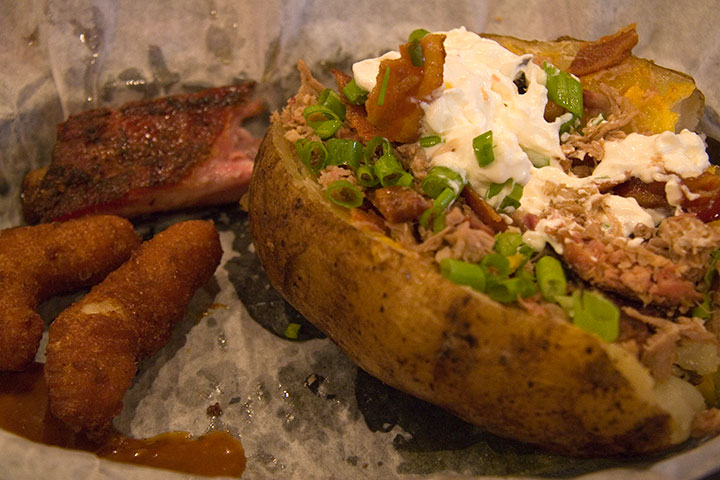
Neither of us could decide, so we ended up eating family-style and sharing everything. I picked the giant stuffed baked potato with everything plus the kitchen sink and a coronary on top (shown here with a bit of Jessica’s spare ribs). Which was fantastic, truly, but it was the hush puppies that stole the show. Best. Freaking. Hush puppies. Ever. I think the secret is in the shape—greater crispy-to-fluffy ratio. Yum.

But my favorite meal of the trip was one that will probably live in my all-time top ten forever: fried-green-tomato eggs Benedict (with a side of grits, natch!) at the Over Easy Cafe. I still dream about that one.
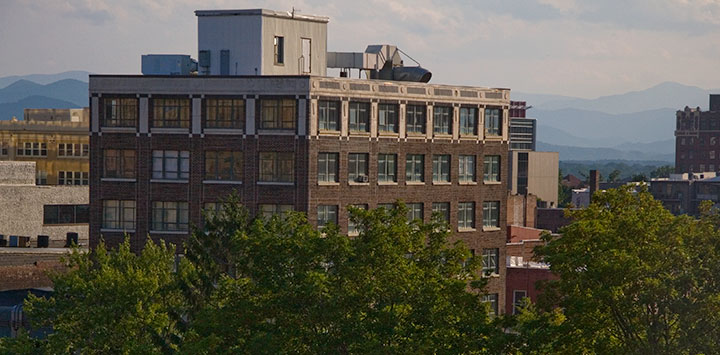
I’m also still dreaming of that blue haze. Whether it’s for the local flavor or the letterpress gals, the hush puppies or the hills, you can bet I’ll be back.
September 10th, 2011
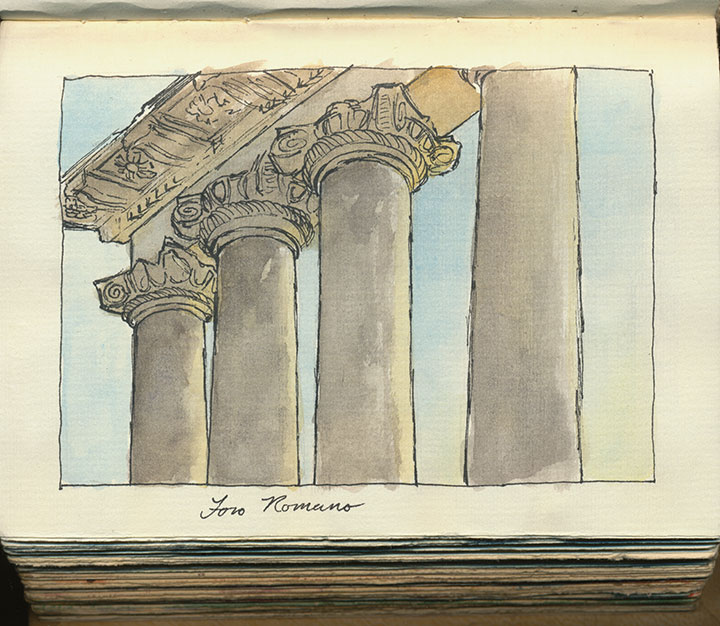
All this week the radio, the blogs, the instant media, and I’m sure the television, too, have been blaring with recaps and riffs and reflections and rage, on repeat, about that day when we all learned a little more about the nature of fear. And it’s not that I’m avoiding thinking about it—it’s that I don’t need any help from the talking heads to process my thoughts. So while I’m mindful of that terrible anniversary, there’s another, more joyful one that’s closer to my heart. You see, it was ten years ago today that I moved to Rome.
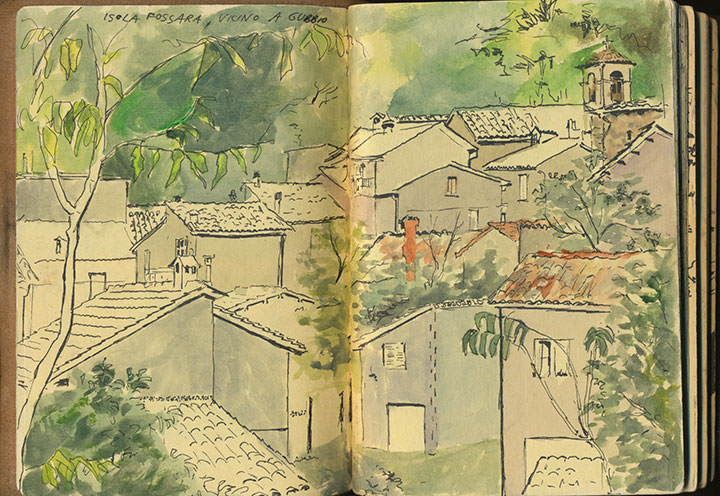
It was my third year of college, but it wasn’t your average study-abroad program. Because my school owned a (haunted!*) house in the middle of the city, and the program was based on independent study, I was able to experience true immersion in the culture and language.
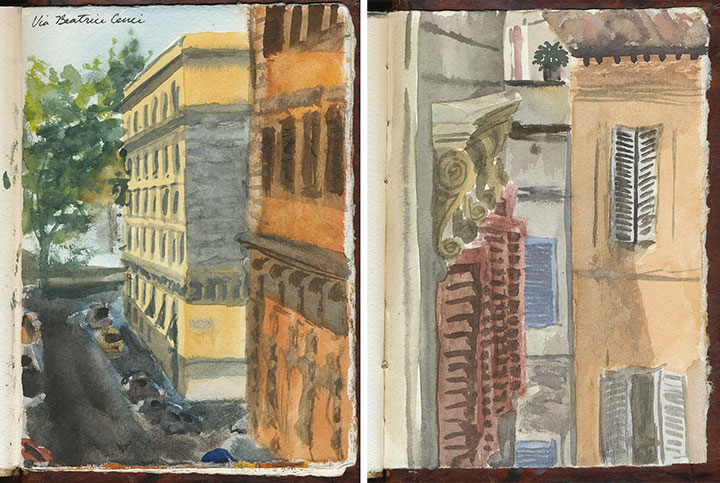
*Built c. 1590, the place was home to Beatrice Cenci, who was infamously executed for the murder of her abusive father. I’m not the superstitious type, but all I’m sayin’ is … well, weird stuff happened in there.
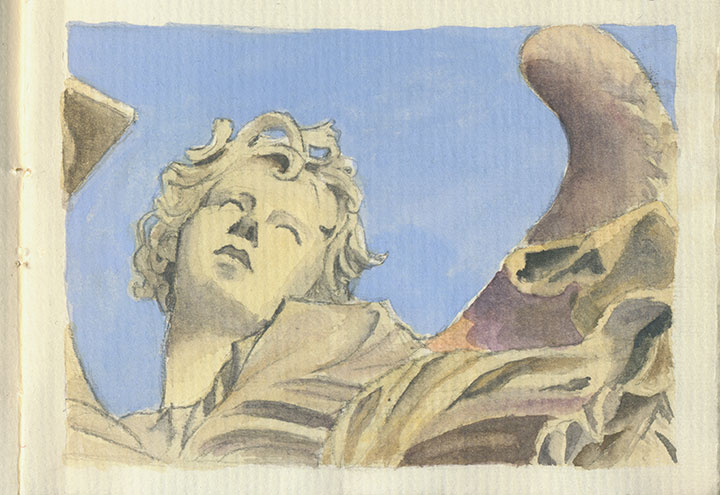
Even at the time, I was aware of just how dumb-lucky I was, not only to have arrived there safely from New York the day before the world turned upside-down—but to have nearly an entire year in which my only responsibility was to experience and absorb the world around me.

That, and to get it down on paper—which proved to be the hard part.

Not that I didn’t try. With flawless weather almost year-round, it was easy to spend every waking minute outside. And with cheap, frequent trains bound for nearly every town in the country, I had no shortage of freedom to roam (sorry). But I’m the obsessive type. I needed to see everything, and though I knew how impossible that was, I think I came about as close as any one person can do. And I have hundreds of drawings as testament to that.
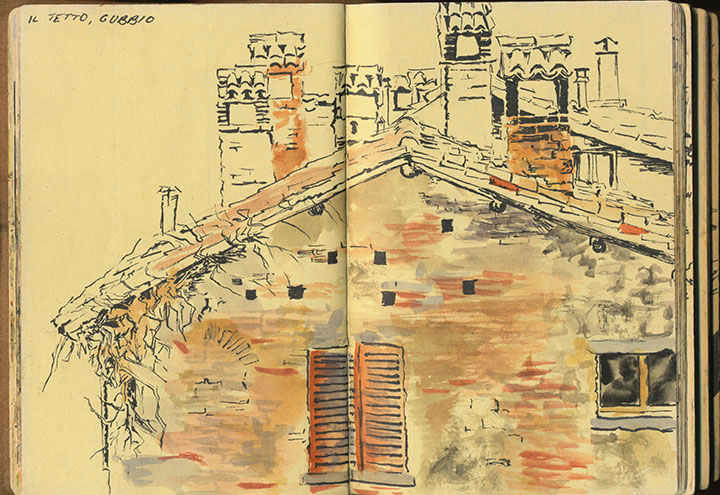
The drive to make the most of my time there was maddening, in the best possible way.
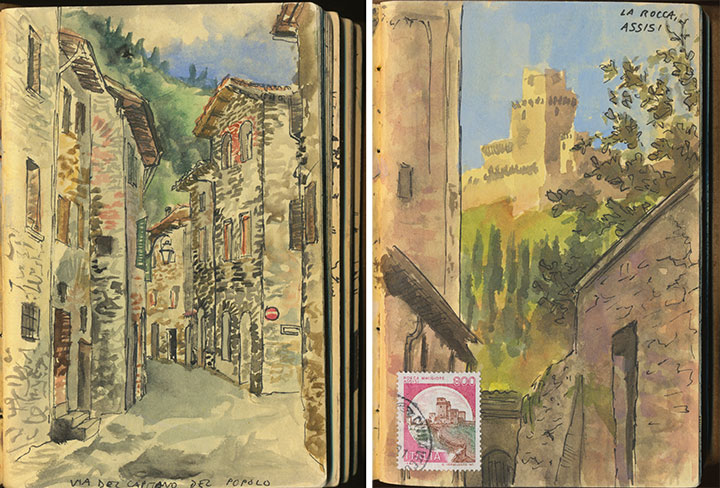
I didn’t know when or if I’d ever have an opportunity like this again, so I did my level best to commit as much of the place to memory as I could. For once, the camera went into storage (I think I shot a grand total of about three rolls of film—remember film?—in ten months), and I left the maps at home. I stuck to paint-and-paper, and my own two feet—and as a result, my memories and mental map of the place are still the clearest, the most vivid of any other place or time in my life.
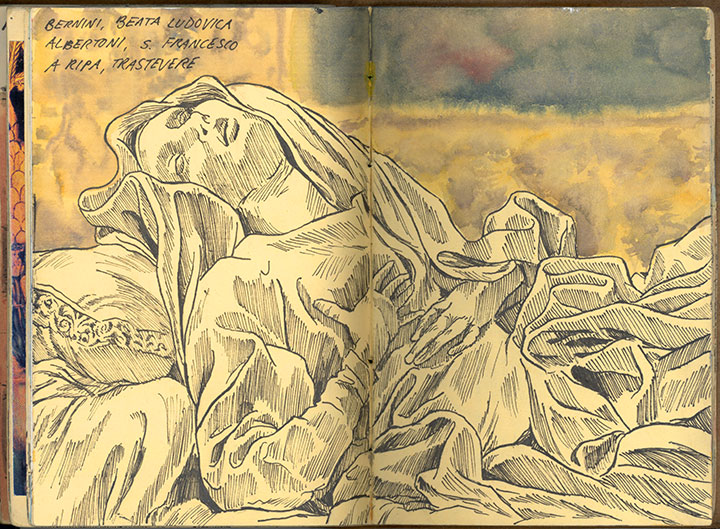
Needless to say, it was awfully hard to leave. Instead of going home, it felt like I was leaving it. And when I arrived back in the States, thanks to the tragedy that took place the day after I left, everything had changed.
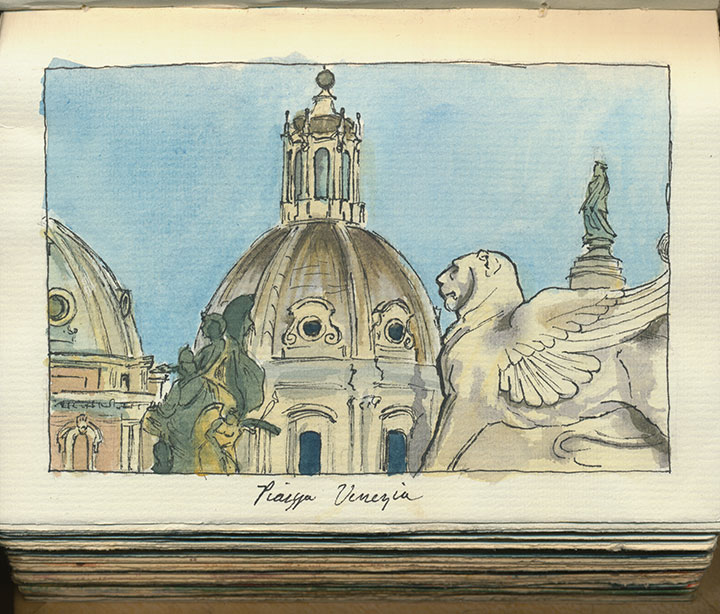
But then again, so had I. And that made all the difference.

September 1st, 2011
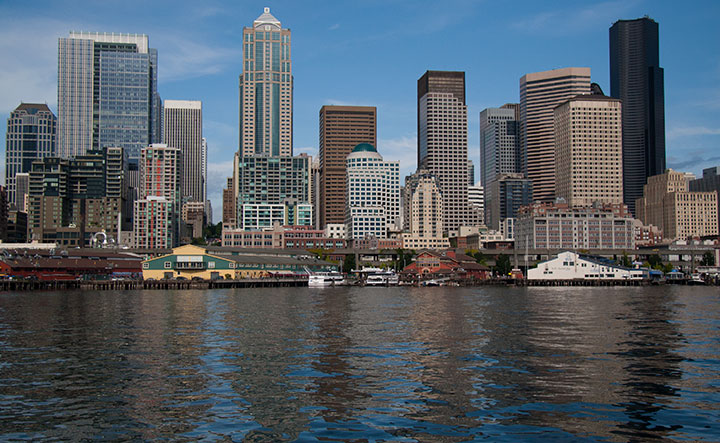
Seattle might be nicknamed the Rain City—but not today!

![Chandler O'Leary [logo]](https://chandleroleary.com/wp-content/themes/chandleroleary/images/logo.png)








































































































